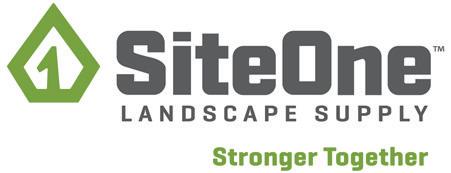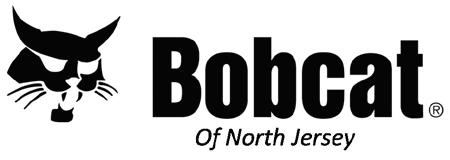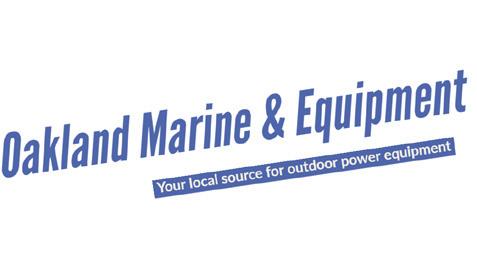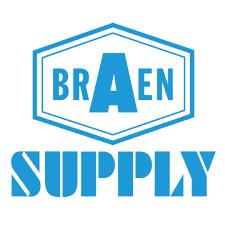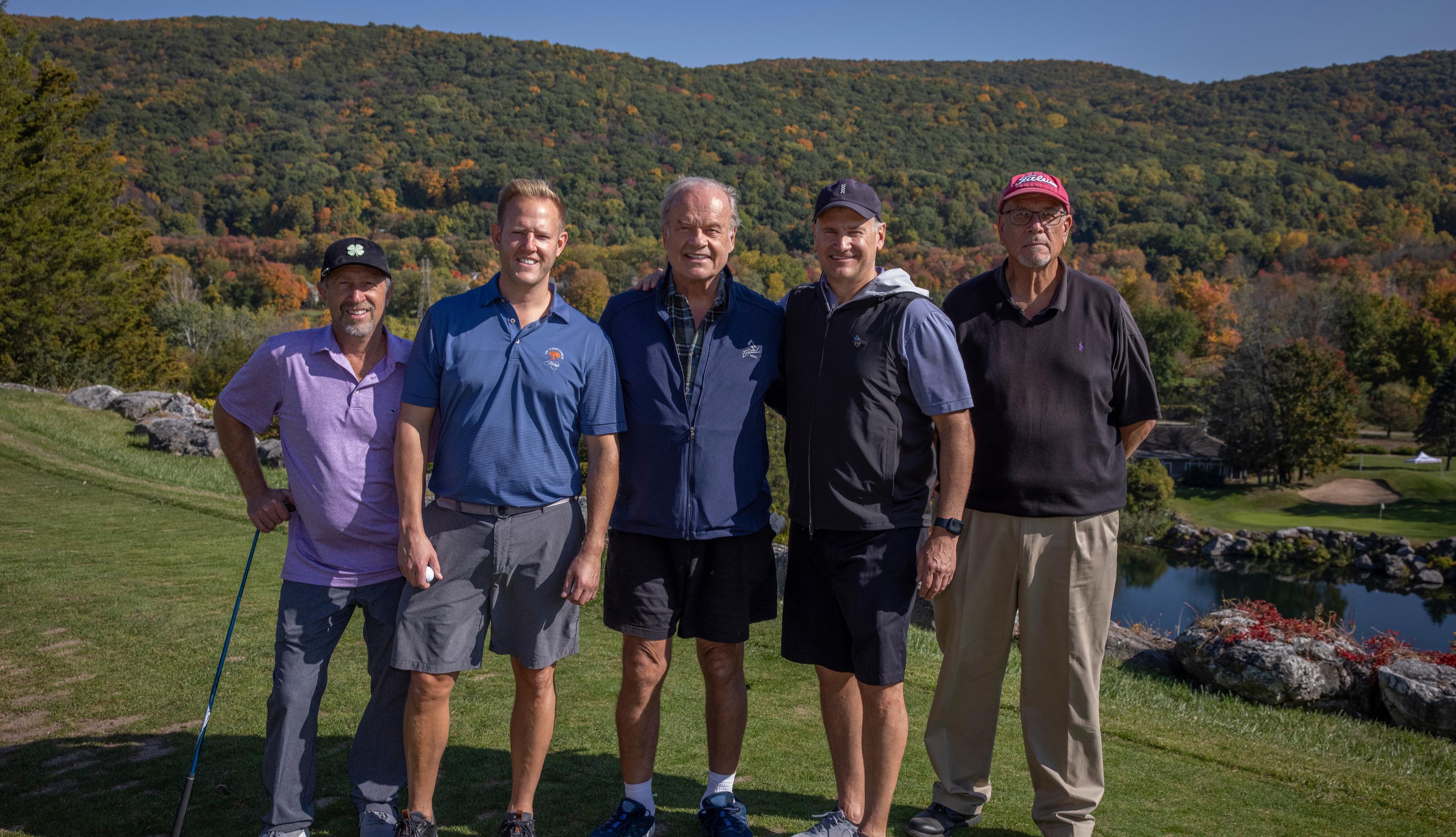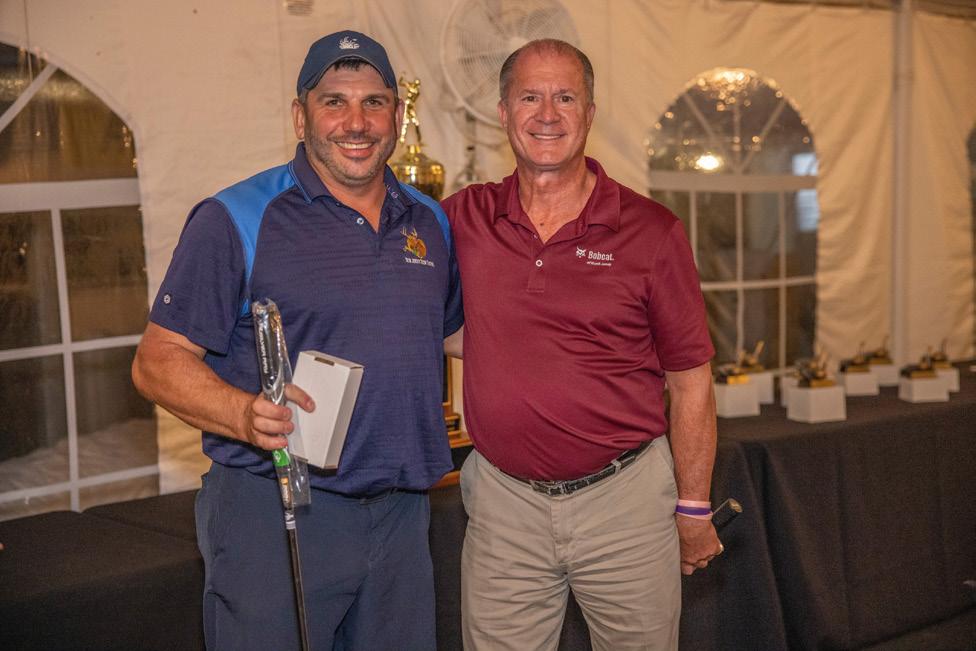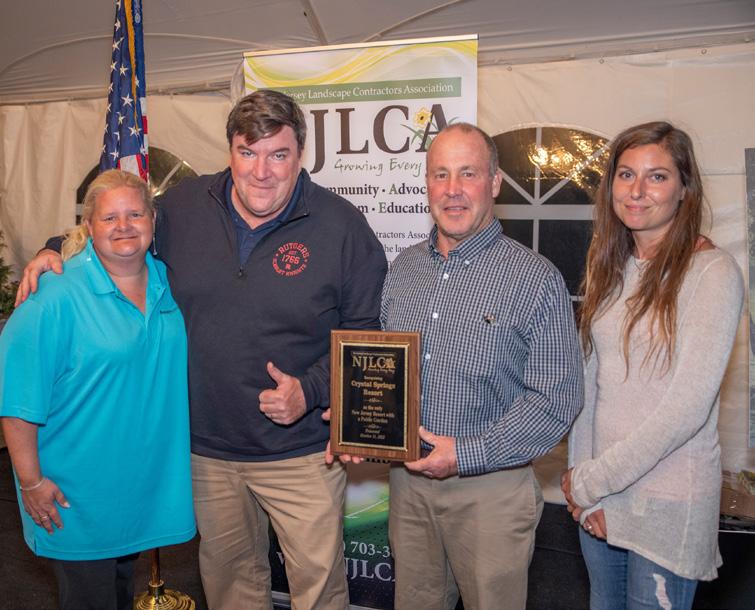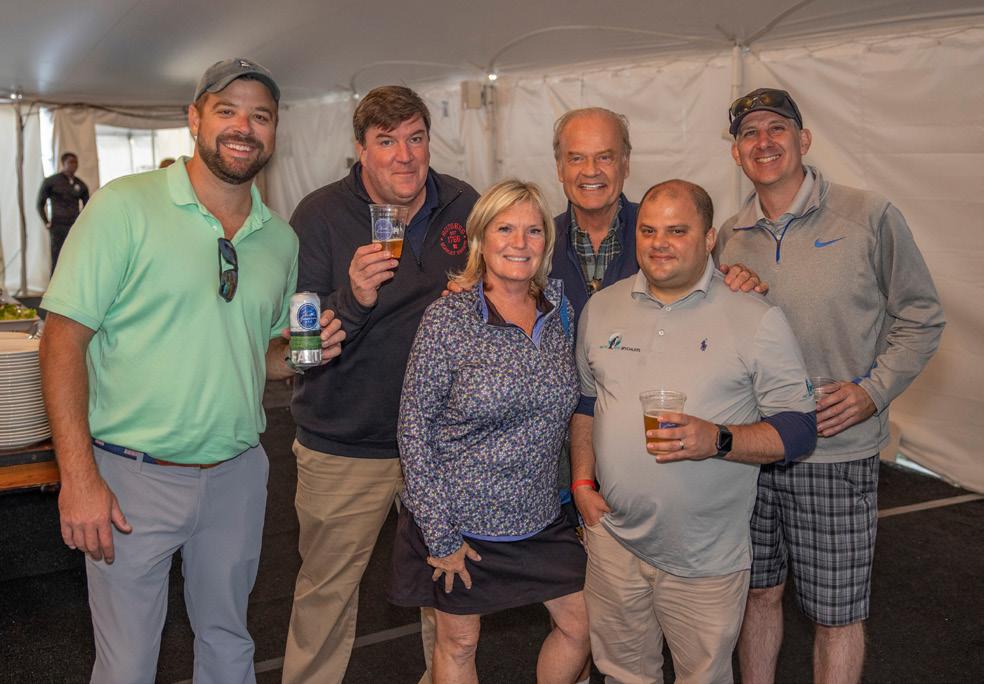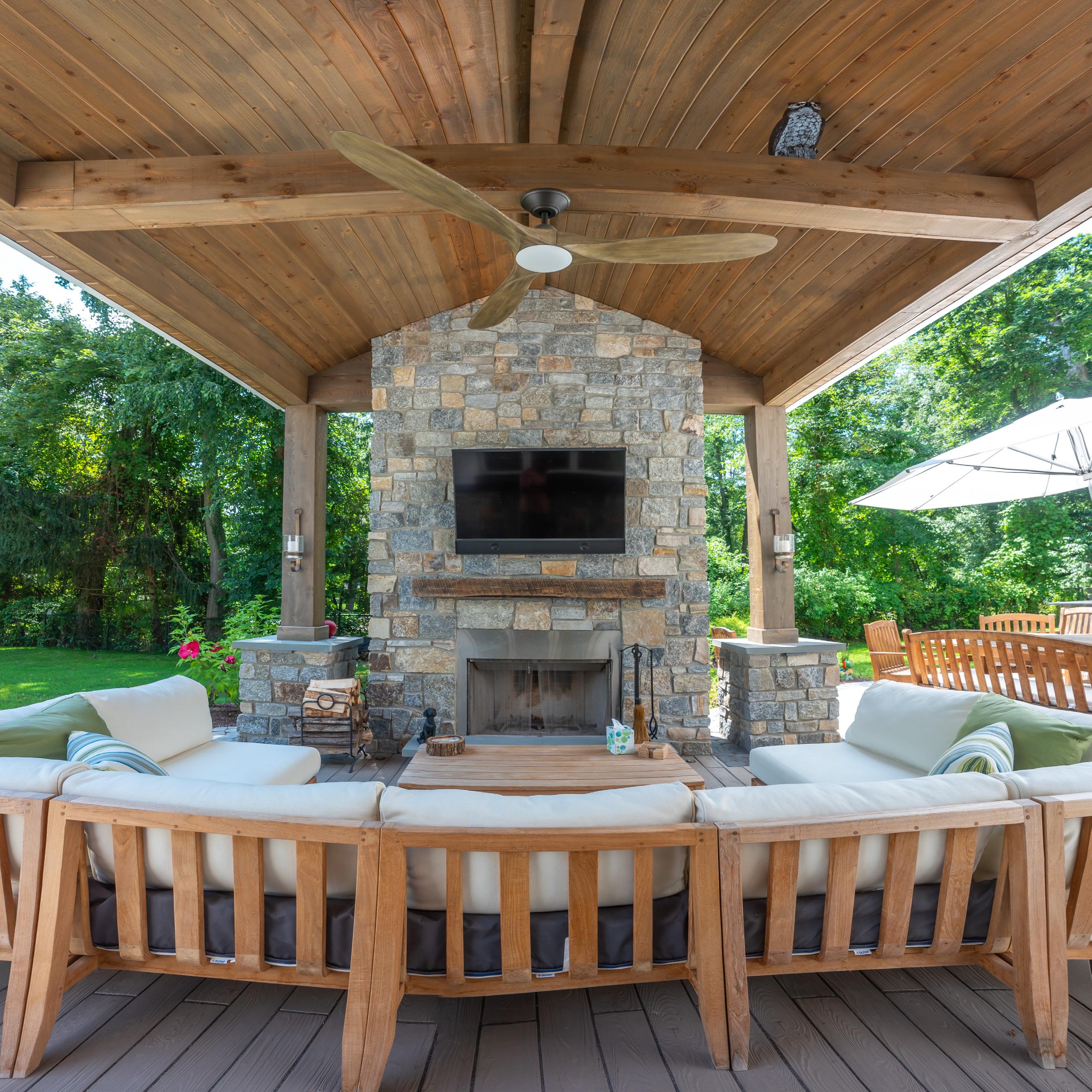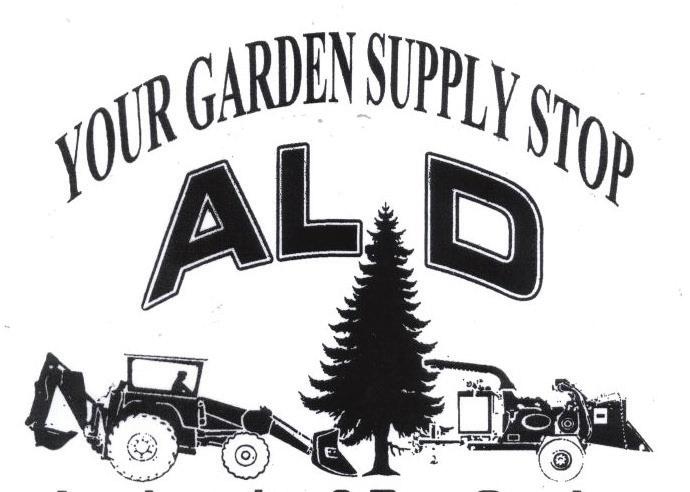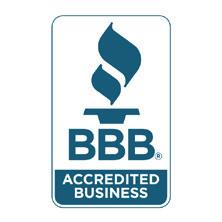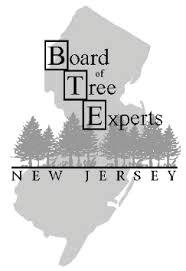






















President’s Message
Letter from the Editor
The Buzz
Color Strategies for Landscape Designs
Turf Talk
Supply Lines
Plant Survival Tips for a Looming Drought Fencing = Profits
How to Transition from Landscape Services to Winter Services
Landscape AlterNATIVES: Sassafras (Sassafras Albidum)
Investing in the Right Wholesaler It’s Fall, Why Am I Seeing So Many Deer?
Native Plant Survey for Green Industry Professionals
Five Ways to Get Your Business to Run Without You
Advertiser Index
The New Jersey Landscape Contractor magazine is the official publication of the New Jersey Landscape Contractors Association, dedicated to the professional landscape industry of New Jersey. NJLCA was founded in 1966 as the Bergen County Landscape Contractors Association, and is today comprised of over 550 member companies throughout New Jersey.
New Jersey Landscape Contractors Association 465 Mola Blvd, Ste. 2, Elmwood Park, NJ 07407
Phone | 201-703-3600 -- Fax | 201-703-3776
E-mail | info@njlca.org Visit our website at www.NJLCA.org
Publisher/Editor: Gail E. Woolcott
Joe Bolognese Jr. | Frank Bourque | Tom Canete | Greg Carpenter | Steven Cesare, PhD | Doug Cherry | Patrick Donovan | Barry Draycott | Lindsey Getz | Richard Goldstein | Phil Harwood | Christopher J. Markham | Daniel Moreland | Anthony Morreale | Brian Oleksak | John Raffiani | Ryan Ravalli | Adam Reisboard | Gail Woolcott | Steven Yergeau
President | Richard Goldstein, CLT
Vice President | Greg Carpenter, CLT
Treasurer | Wade Slover
Chairman of the Board | Justin Flatow, CLT
Director | Richard Andreu
Updates for USDOT Numbers for NJ Intrastate Carriers
The Biggest Challenges Faced by In-House Marketers at Lawn and Landscape Companies
IPM: A Common Sense Approach in Lawn and Landscape
Instagram Reels: How To and Why The Family Behind the Business Work Smarter, Not Harder with Large-format Modular Concrete Panel Systems
Pulse Meetings
Welcome Members
Contractor Focus: Big Heart Landscaping
Associate Focus: KPM Exceptional Tales from the Landscape Side Service Project: Wyckoff Engine 2 Holiday Gala and Achievement Awards Dinner
2022 NJLCA Golf Challenge Photos
Director | Jeff Baker
Director | Tom Barillo
Director | Hector Escobar
Director | George Futterknecht, CLT
Director | Scott Hild, CLT
Director | Shawn Kukol
Associate Director | Joe Bolognese
Associate Director | David Gaynor Associate Director | Rawn Leegwater
Associate Director | Adam Reisboard
Advisor | Dr. Steve Fischer, Bergen Comm. College Advisor | Dr. James Murphy, Rutgers University
The New Jersey Landscape Contractor magazine is published triennially. 600 print copies are distributed to members and over 4,000 digital issues are sent to professionals in the Green Industry of New Jersey, as well as educational and governmental institutions. Subscrip tion rates: $45.00 per year; $15.00 per copy. New Jersey residents only, please add 7% sales tax.
To advertise in The New Jersey Landscape Contractor, please contact Gail Woolcott at (201) 703-3600 or e-mail gwoolcott@njlca.org.

Article and photo submissions are encouraged and may be sent to NJLCA at the above address. Publisher assumes no responsibility for safekeeping or return of photos or manuscripts, and reserves all rights to edit material submitted for publication.
© 2021 New Jersey Landscape Contractors Association. All rights reserved. The contents of this publication may not be reproduced by any means, in whole or in part, without the prior written consent of the publisher. The opinions expressed in articles do not necessarily represent the opinions of the NJLCA.
PUBLISHED October 2022
Cover Photo: Monello Landscape Industries, Wayne, NJ
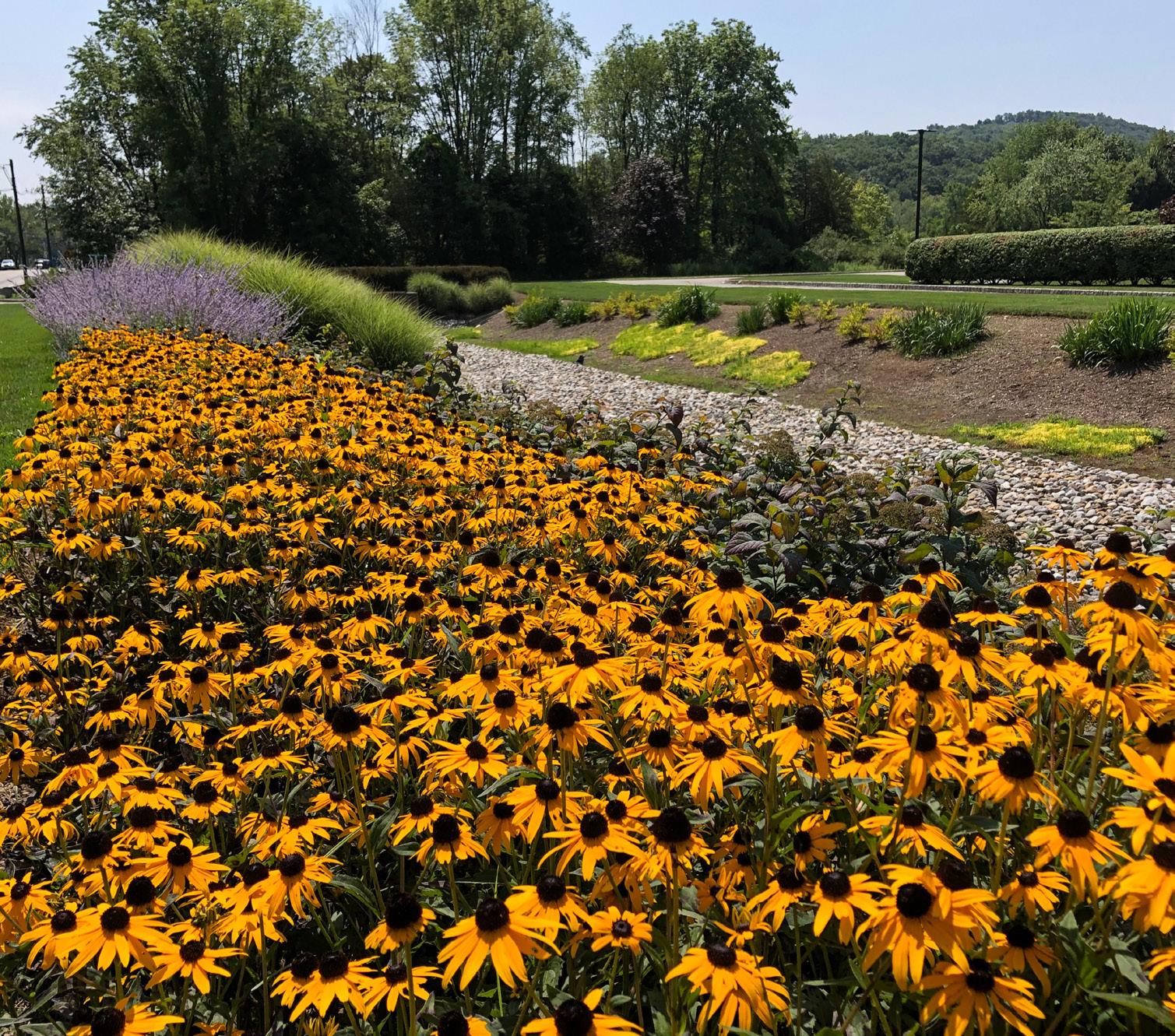
What a year it has been for NJLCA and our members! So many contractors and associates I have spoken to have had a busy season so far. As we come to the end of another year, I thought I’d take time to talk about all of the events and offerings that the NJLCA has provided to its members and the industry through out the year.
• 2 Bergen Technical School Advisory Board Meetings
• 2 calls with Assemblywoman Swain to discuss her bill which does not ban gas-powered equipment but does provide credits and rebates to those who purchase battery pow ered equipment. Calls also includ ed AGZA, NJNLA, NJGIC, NJPMA (Pest Management), NJ Arborists
• 2 calls with Senator Smith regard ing blower bans
• 2 Consumer Affairs Meetings with Allied Associations to discuss en forcement and licensing
• 3 Magazines
• 4 AMT Program Committee Calls
• 6 calls with the CIANJ to work on Dirty Dirt legislation
• 8 State Board of Agriculture Meetings
• Agricultural Convention in Atlantic City – Our first time with a seat at the convention
• Agricultural Educational Advisory Board Meeting
• Agricultural Leadership Develop ment Program Dinner at Abma’s Farm in Hillsborough
• AGZA Calls regarding statewide blower ban with NJGIC and NJNLA
• AGZA Zoom meeting with Advo cates for Transforming Landscaping in New Jersey (ATL-NJ) to slow their initiative for blower bans
• Assemblyman Kevin Rooney event to discuss snow legislation

• Assemblymen Karabinchak event who agreed to sponsor the Land scape Licensing Bill
• Blower Ban Coalition Calls (NALP, NJNLA, NJGIC, NJRPA, NJTA)
• Booth at the Bergen County 4H Fall Harvest Fest to share the importance of using an NJLCA member and intro duce children to the industry
• Call with Assemblyman Paul Moriarty regarding Landscape Licensing Bill
• Call with Chuck Bowen regarding Equip Magazine (free to members)
• Call with Congressman Gottheimer to discuss H-2B returning worker exemptions
• Call with Mark Bradley, Co-Founder of Landscape Management Net work for new member benefit.
• Call with NJLCA and IANJ leader ship to discuss the snow bill and current lobbying efforts
• Call with OSHA Regional Director and Marketing regarding an OSHA Alliance
• Call with Senator Oroho and our lobbyist to discuss the statewide blower ban
• CIANJ Leadership Awards – Received award for Environmental Education
• CIANJ webinar on current HR Issues
• Classes at NJ Green Expo
• Conference call with Assemblyman Herb Conaway to discuss ban of all gas-powered lawn equipment
• County Agriculture Board Meeting at Alstede Farms
• Dinner with Connecticut Grounds keeper Association Exec. Director Liam Ohlmann to discuss synergies and promoting members
• Dinner with NY State Turf and Land scape Association to discuss legisla tive issues affecting both NY and NJ
• Discussions with Josh Ferguson, Esq. about the townships requiring their own registration despite the HIC registration
• Letters to municipalities informing them that the HIC should supercede township permits
• Dr. Bruce Clarke and Dr. Bill Meyer’s Retirement Party
• Future Farmers of America Nursery and Landscape Competition judging
• Golf Outing at Crystal Springs with special guests Senator Steve Oroho, Assemblyman Hal Wirths and Kelsey Grammer
• Holiday Gala and Awards Dinner
• Interview for Turf Magazine regard ing neonic and blower bans
• Landscape Achievement Awards
• Landscape NJ Trade Show & Conference
• Latino Mixers
• Meeting with Congressman Andy Kim to discuss H-2B program
• Member Meeting - Bobcat
• Member Meeting - Mr. C Fence
• Member Meeting - Site One
• Member Meeting - Aquarius Supply
• Member Meeting - Cambridge Pavers
• Member Meeting - Progressive Hydraulics

• Membership Directory
• NOISE Show in Lambertville
• NY State Turf and Landscape Asso ciation Persons of the Year event
• Pesticide, Tree & Fertilizer Training Classes
• Pizza Night event
• Rutgers Landscape Field Day booth
• Rutgers Turf Advisory Board Meeting
• Senator Scutari event who agreed to sponsor the Landscape Licensing Bill
• Service Project at Fire Company 2 in Wyckoff
• SiteOne Open House
• Survey on invasive species bill
• Sustainable Landcare Workshop and Certification program with AGZA and NJNLA
• Testified in Trenton on the Dirty Dirt Bill
• Worked with lobbyist on several initiatives including Insurance Mini mum Increase bill, Dirty Dirt Bill (we received the extension), Landscape Licensing Bill, Snow Bill, H-2B, HIC becoming a license and more
As you can see, your membership dollars are hard at work. Please encourage your industry friends and colleagues to sup port the industry by becoming an NJLCA member today! The more voices we have, the more change we can make!
Sincerely,
Richard Goldstein, President
Lifetime Member of NJLCA, Tony Lupardi, Sr. passed away at 94 years of age. Tony, of Lupardi’s Nursery, and father of past President Tony Lupardi Jr., has been an integral and active member of the NJLCA for many years. We will miss seeing him at Pizza Night each year, always smiling. Thank you for your service Tony.
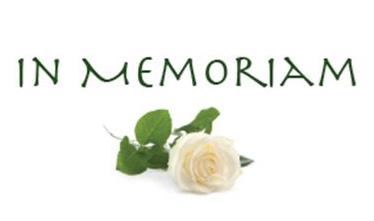

Tony was born March 27, 1928, in Summit, NJ to Anthony and Mary Lupardi. Tony was preceded in death by his wife of 71 years Lorraine, brother John and sisters Carmela and Ann, and is survived by his sister Philomena. Beloved father of Judy, her husband Gary, Sharon, her husband Paul, Tony, his wife Donna, Barbara, her husband Randy, Mark, his wife Doreen, Linda, and her husband Gary. Proud grandfather of 16 grandchildren and great grandfather of 5 ½ great grandchildren. Tony married his high school sweetheart, Lorraine on April 16, 1950. Upon marriage, the couple took up residence in Closter, where he established Lupardi’s Landscaping / Nursery and raised his family. Both where devoted members of The Church of St. Mary and served as eucharistic ministers. Service to community was always important to Tony, he volunteered in many local organizations. He was an exempt member of the Norwood Fire Department and life member of Closter Fire Company. Tony was an active member of The Knights of Columbus, Lions Club,
Shade Tree Commission and New Jersey Landscape Contractors Association where he held several leadership positions for over 7 decades.
In his later years he became an avid golfer playing into his nineties. As he got older, he said he was close to shooting his age. Tony’s passion was plants, mainly roses and geraniums to name a few. But his greatest joy was his family, especially his grand and great grandchildren. He loved vacationing at the Jersey Shore and Aruba with his wife, family and friends. Tony will forever be remembered by all who knew him with great love and admiration.
Welcome to the latest issue of The New Jersey Landscape Contractor magazine.
I can’t believe how fast the summer has gone! It seems like a few weeks ago we were just getting started on the season. We had a great sustainable landscape event, where over 40 people came to check out how to successfully run battery operated equipment and make it profitable. We also held a wildly successful and fun golf outing at Crystal Springs Golf Resort. Check out the photos at the back of this issue.
We are now looking forward to our highly-anticipated Holiday Gala and Achieve ment Awards Dinner and are hoping to break attendance records again! Take a look at the details on page 53.

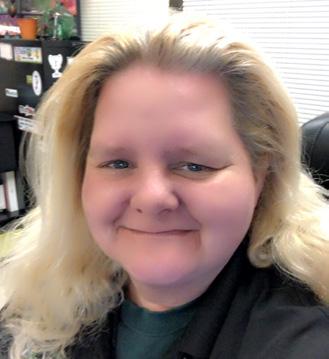
Have a great fall and thank you all for your continued support.
Sincerely, Gail Woolcott, Executive Director

















 by Brian Oleksak, County College of Morris
by Brian Oleksak, County College of Morris

The artistic use of color in landscape plant selection can make the difference between a ho-hum landscape and one that shows off a wow factor. Ornamentals offer a diverse color palette through flow ers, fruits, variegated foliage and some times bark. A little strategic planning of plant selection and color schemes will greatly enhance your overall project.
When visible light is broken into its component colors we have that familiar array of red, orange, yellow, green, blue, indigo and violet. When this spectrum is wound into a circular format we have the color wheel which reveals useful re lationships when used in a landscape design. Colors which are opposite each other, such as orange and blue or yellow and purple are regarded as complimen tary. For the novice designer these pair ings make a dependable combination for beds, containers and hanging baskets. Colors that appear side by side on a color wheel are regarded as associative. Col ors such as red and orange or purple and blue blend well because of their shared
color origins. A slightly more complex scheme would be a triadic color scheme. A triadic scheme is accomplished by se lecting three colors approximately equi distant on the color wheel, for example yellow-orange, blue-green and red-vio let. However, the trick to using them ef fectively is to use two of the selected col ors for approximately eighty percent of the plant material in the bed and the last twenty percent as an accent to punctuate the design. If you feel that the color com binations you have selected may be too daring, you can tone things down with the addition of white flowers or more foli age plants which have a softening effect.
Colors are also categorized according to their “temperature”. Colors such as red, orange and yellow are seen as warm colors. Their presence in the landscape has an electrifying effect to the eye. Not surprising that these colors are used for traffic signs and car dashboard warning lights - they grab your attention. Col ors such as blue, green and purple are cool colors which emanate a sense of calmness. Within each hue we can also experience differences in the purity or
intensity which produces varying looks. Coreopsis ‘Zagreb’ has an intensely yel low flower, while Coreopsis “UpTick






Crème’ produces a pale, creamy yellow lending two very different influences on the border. Repeating the same col ors throughout the landscape (a color “echo”) may add a sense of harmony to the overall project. Seeing the repetition of yellow in the front yard carried into the side border forms a connection between the two spaces.
Blue is an elusive flower color for land scape designers. The color blue in flow


ers is produced by a group of pigments called anthocyanins, which are actually red and purple pigments. Differences in soil pH and the reaction with other mol ecules may yield blue, but shades of pur ple tend to be the dominant hue. Fewer than ten percent of the plants in the plant kingdom produce blue flowers. Some notable landscape plants approximat ing a true blue include delphinium, bach elor’s buttons, Italian bugloss, gentian and Himalayan poppy. Most landscapers recognize that the flower color of bigleaf hydrangea (Hydrangea macophylla) can be influenced by altering the soil pH. When grown under acidic soil conditions the shrub bears intensely purple-blue flowers, while alkaline soil yields pink. To maintain the blue color the landscaper may apply garden sulfur or aluminum sulfate to lower the pH.
Anthocyanins are also responsible for the intensely dark purple to nearly black foliage colors of ornamentals found in the nursery trade such as smoke bush (Coti nus coggygria ‘Royal Purple’), ninebark (Physocarpus opulifolius ‘All Black’), coral bells (Heuchera hybrid ‘Black Pearl’), car pet bugle (Ajuga reptans ‘Black Scallop’), ornamental millet (Pennisetum glaucum ‘Purple Majesty’) and snakeroot (Cimicif uga ramosa ‘Hillside Black Beauty’), just to name a few. Though these cultivars make a bold statement in the landscape they should be used strategically and in moderation. Dark colors have a receding quality often creating an oppressive and gloomy impact when used in excess. A great use for dark foliage is to use these specimens as a backdrop for flowers with pastel colors. Pastels such as pink, pale yellow and powder blue fail to make an impression in the border, particularly on sunny days when they appear bleached out by the sun. Backing them up with dark foliage sharpens the viewer’s attention on them and sets them off beautifully.

Anyone who has taken on a home painting project quickly recognizes that there is a limitless palette of choices for what is considered to be white. Flow ers and variegated foliage provide op portunities for a more nuanced design by focusing on the many variations of white. There are creamy whites, pinkish whites, silvery and grayish whites. The
The graceful arching black cordylines provide a color echo to the wrought iron fence, while the ivy and pelargoniums hint at the brick and mortar of this London townhouse. (Photo courtesy of Brian Oleksak)

most famous example of a monochro matic scheme using white flowers and variegated foliage is the White Garden at Sissinghurst Castle in Kent, England. This garden featuring white, gray and sil ver flowers and foliage has served as an inspiration for contemporary landscape designers for its unique approach to de sign. Monochromatic schemes provide a calm, meditative setting that de-empha size color, encouraging the viewer to fo cus in form and texture.
When working on your planting plans don’t be afraid to take some chances with color selection. New plant cultivars ar rive on the market every year giving you the opportunity to mix it up a little.
Brian Oleksak is Associate Professor and Chairperson of the Landscape and Horticul tural Technology Department at the County College of Morris in Randolph, New Jersey. Professor Oleksak teaches courses in woody and herbaceous plant identification, soils, ar boriculture and botany at CCM. He holds a B.S. in Agronomy from Penn State University and an M.S. in Ornamental Horticulture from Ohio State University. Professor Oleksak resides in Newton, New Jersey.
If you are in the horticulture industry, January means one thing – it’s time for MANTS. As an exhibitor or attendee, the camaraderie and contacts that you experience will start the new year off on the right foot. Plan for a successful selling season. Plan to attend MANTS.





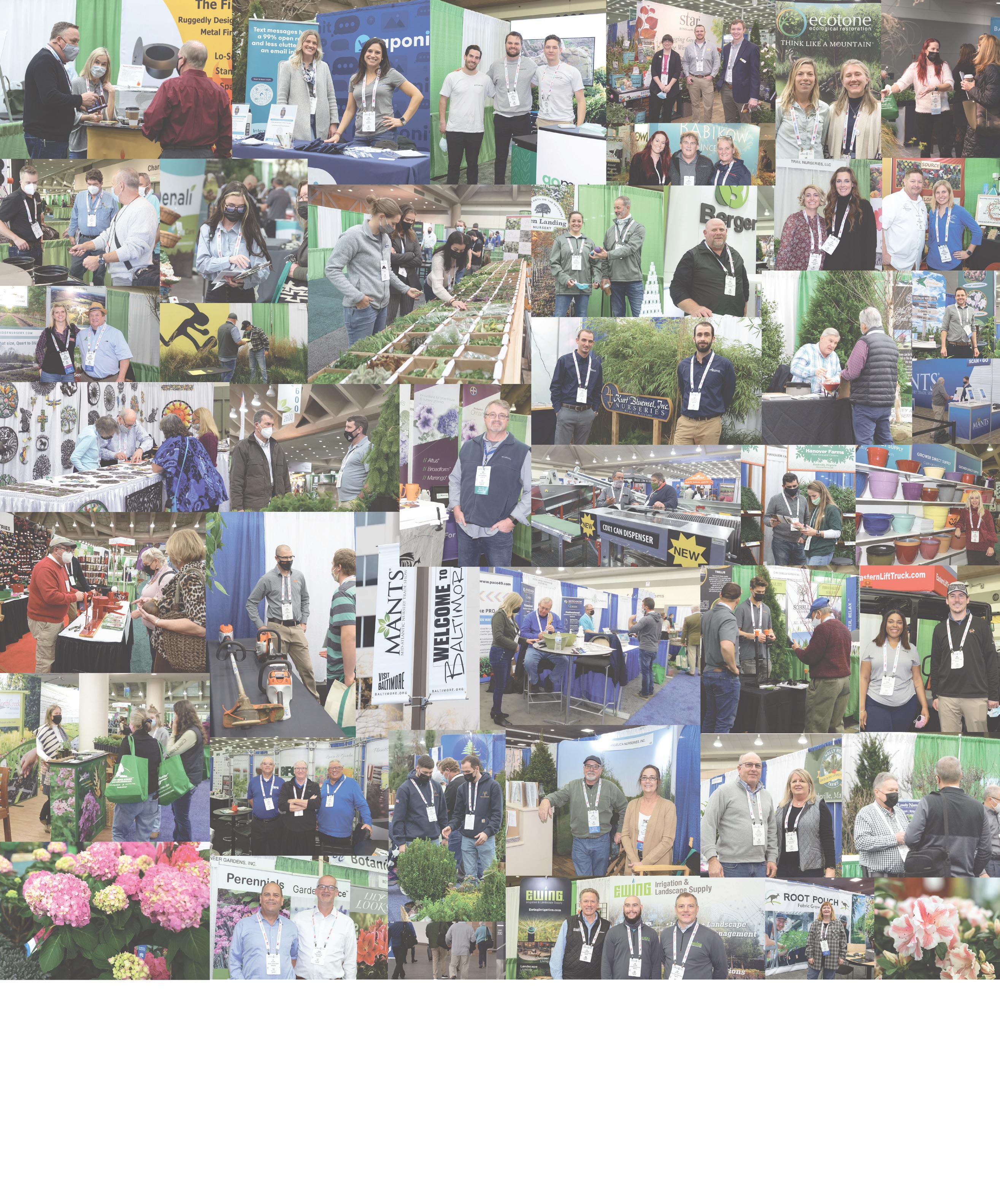
As the season winds down, you may have noticed all the crabgrass we had this season. Last year I told you it was because of all the rain we had after the preemergent had been applied. This year, it is just the opposite. It was so cool and dry, the pre-emergent may never have been watered in, depending on your date of application. When any chemical sits on the surface waiting to be watered in, the sun degenerates the chemical. This is true of all dry applications. When you have a combination fertilizer, the secondary
by Greg Carpenter, CLT, American Beauty Landscapecomponent is always on the outside of the pellet. Example: Fertilizer and Dimension - the Dimension is on the outside of the fertilizer so it’s the first thing to be released once wet. But, it is also the first thing to degenerate in the sun. The same is true of fertilizer and insecticide. In Allectus, the Bifenthren is attached to the fertilizer. So it is the first thing activated by irrigation or degenerated by the sun/ dry conditions. Dylox says to water immediately after application and any time in the sun. The sun degenerates the viability of the application.

On a different note, I am often shocked by the generational changes in the landscape industry. Sprinklers that are controlled by your phone, electric lawn mowers that are the price of a car just for a stand on...One of the biggest changes is that everyone has a dog. When my brother and I started our own company in 1983, we vowed to have a “no dog” policy. We were sick of the poop that we had been subjected to from our previous employers’
Most wise Outdoor Contractors know it will take more than the “Force” to change the supply chain forecast in 2023.
What that forecast looks likes is different for every item.
What we do know is the relationship you have with your supplier is key! They are there in the trenches, helping you navigate through the supply &
customers. People were in shock, but we did it. 120 dog free lawns. It was great. Fast forward to 2022 as I’m driving my PermaGreen I hear “Don’t put anything down in the back yard, our Fluffy is having his birthday party this weekend. You can JUST COME BACK NEXT WEEK!” As if I don’t have anything better to do then wait for a green light from Fluffy. So, the question is how much money is your dog costing me?? Answer is: A LOT! Lost time, lost momentum and most of all, lost emotional currency.


Greg Carpenter, CLT is owner of American Beauty Landscape since 1982. He attended the SUNY Farmingdale Turfgrass Program and is the Vice President of the NJLCA. Greg also serves on the Rutgers Turfgrass Advisory Board and the Bergen Community College Horticultural Advisory Board.
by Joe Bolognese Jr., Site One Landscape Supply
logistic battles every day. With so many Manufacture sales and specials, there are plenty of options for you to choose from. Make sure before the end of the year hits, you take the time to schedule a sit down meeting with your supply house representative(s) to discuss the next years plan for being prepared. A True Outdoor Contracting “Jedi” knows that preparation is key to any successful business. Utilize your suppliers EOP (Early Order Program(s)) to lock in pricing and give you flexible payment options to keep more “Credits” or dollars in your pocket longer.
Also, plan for alternate products that will help you manage uncertain supply chain shortages, to keep your business flowing and your customers happy.
There are so many ways your supplier can assist you in keeping you and your business going and help you navigate
any “asteroid fields” your “ship” or business might encounter thru the season.
And remember, the “Force” and your account representative will be with you, Always!
Joe is a Counter Service and Sales Representative at SiteOne Landscape Supply in Mahwah, NJ. He is a past Vice President and current Member of the NJLCA Board of Directors. He Chairs the By-Laws, Education, Licensing / Certification & Scholarship Committees. Joe has been an active member of the NJLCA for 20 years and has over 25 years experience in the Landscape & Irrigation Industry, working for several well known distributors including John Deere Landscapes, Shemin Nurseries & Atlantic Irrigation, which are all now SiteOne. Joe is always actively and passionately advocating for the NJLCA Membership through Education.
I have been closely watching the drought in the Northeast during July and August and what I have seen is not pretty. If pre cipitation does not improve, and soon, we will see a drought dec laration come down from our state government.

Regardless of a drought declaration there are many ways to ensure the survival of your recent and proposed plant installa tions. For example, I have noticed an increase in the use of stan dard soaker hoses that are commercially available and are laid out and connected to a hose faucet:
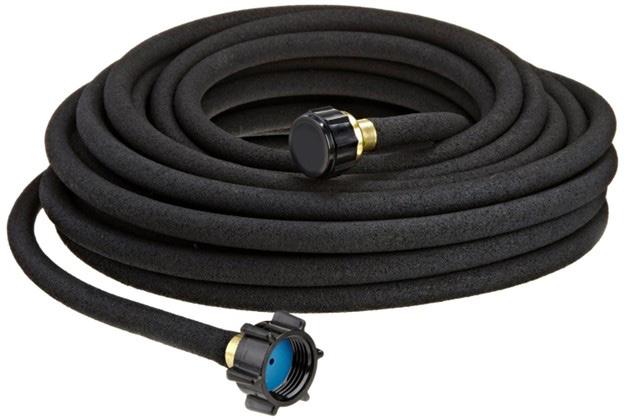

A common practice is to run the soaker hoses along one or both sides of new plantings:
While this would appear to be a good stopgap measure the problem with these hoses is the pressure gradient that decreas es the further away from the supply. A direct result of this is less water to the plantings towards the end of the soaker hose and more near the beginning. A simple way to correct this and con tinue to use these hoses is to employ a common irrigation prac tice called “hydraulic looping”. By supplying your soaker hoses from each end, the pressures and discharge rates are evened out. It can be as simple as adding another garden hose to the system then connecting it to a “Y” hose adaptor and coupling it to the other end of the soaker run:
A more permanent approach would make use of standard irrigation drip line tubing placed under the mulch layer:
Drip lines come in many discharge rates that are specified in gallons per hour (GPH). Some sample emitter discharge
amount of water put down in one hour would be approximately 0.96 inches from the chart below. If the timer is set for 20
It too is available in several discharge rates and requires simple fittings, a pres sure regulator and a filter to connect to a
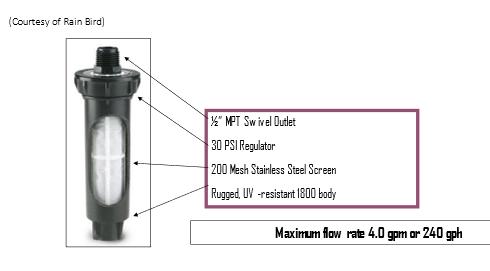
rates from various manufacturers are (but not limited to) 0.33, 0.4, 0.53, 0.6, 0.77 and 0.9 GPH. Additionally, the emitter spac
minutes then the amount of water applied would be approximately 0.32 inches- a good drink for those newly planted thirsty green giants!
It is always good advice to use appli cation rate charts such as the one above. When planting in hard, poorly drained soils it is important not to over water. Use of application charts can ensure that you do not run the drip line too long. For these soils shorter run times are called for with sufficient time in between cycles so as not to have your plant’s roots swimming in a bowl.

A simple inline filter and pressure re ducer is needed and with the proper fit tings can be hooked up to a hose faucet:
Since the nature of today’s consumer cannot be depended upon to water as di rected the addition of a battery hose faucet timer will yield a more complete solution to
water supply. While soaker hoses and 1617mm drip lines cost 30-40 cents per foot most drip tape is available for as little as 11 cents per foot. This makes it a signifi cant cost saving product when used as a drought watering backup on numerous plant installations.
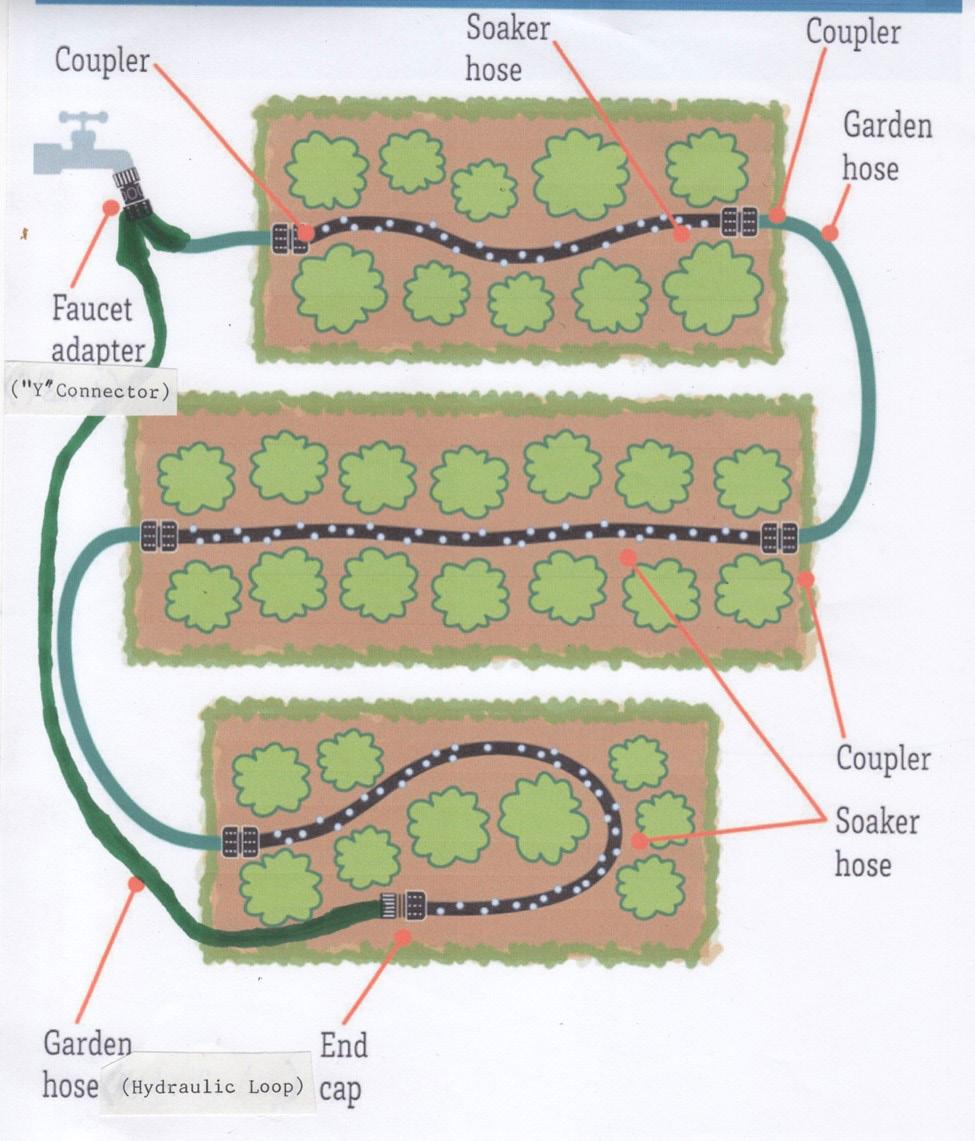


Another approach to ensuring your planting’s chances at survival are soil ad ditives that hold water or allow improved use of the water already in the soil profile. One such product is Turface which is a composed of similar material in clay gar den pots but pelletized to add into soil and serve as a moisture management tool:
Turface is widely used and has many qualities such as improved water reten
ings are available in 8, 12-, 18-, 24- and 36-inch varieties. This affords the end user many design choices. However, with out a deeper knowledge of drip irrigation design principles I recommend that occa sional users of drip lines for plantings pick a product that has 12-inch emitter spac ings and a discharge rate between 0.6 and 0.9 GPH.
As an example, the drip line selected for this application is a 0.9 GPH emitter with a 12-inch emitter spacing:
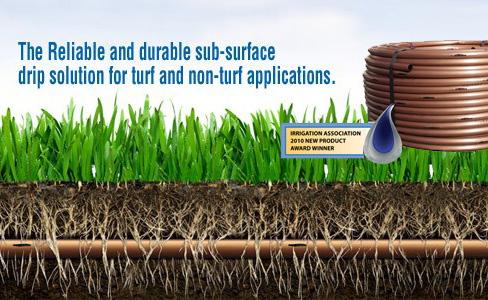

If the drip line is placed on each side of the plants 18 inches apart then the
keeping your plantings alive and thriving.
A more economical and temporary product that performs the same functions as drip line is drip tape:
tion, adding space for air and nutrients to the roots, soil stability and more usable water when at the moisture level known as “field capacity”.
Other products such as hydrogels and hydrogel crystals were used in the past but the toxic nature of them contributed to their waning popularity and they are not on my recommended list.
This brings us to the final product I have used in the past when faced with
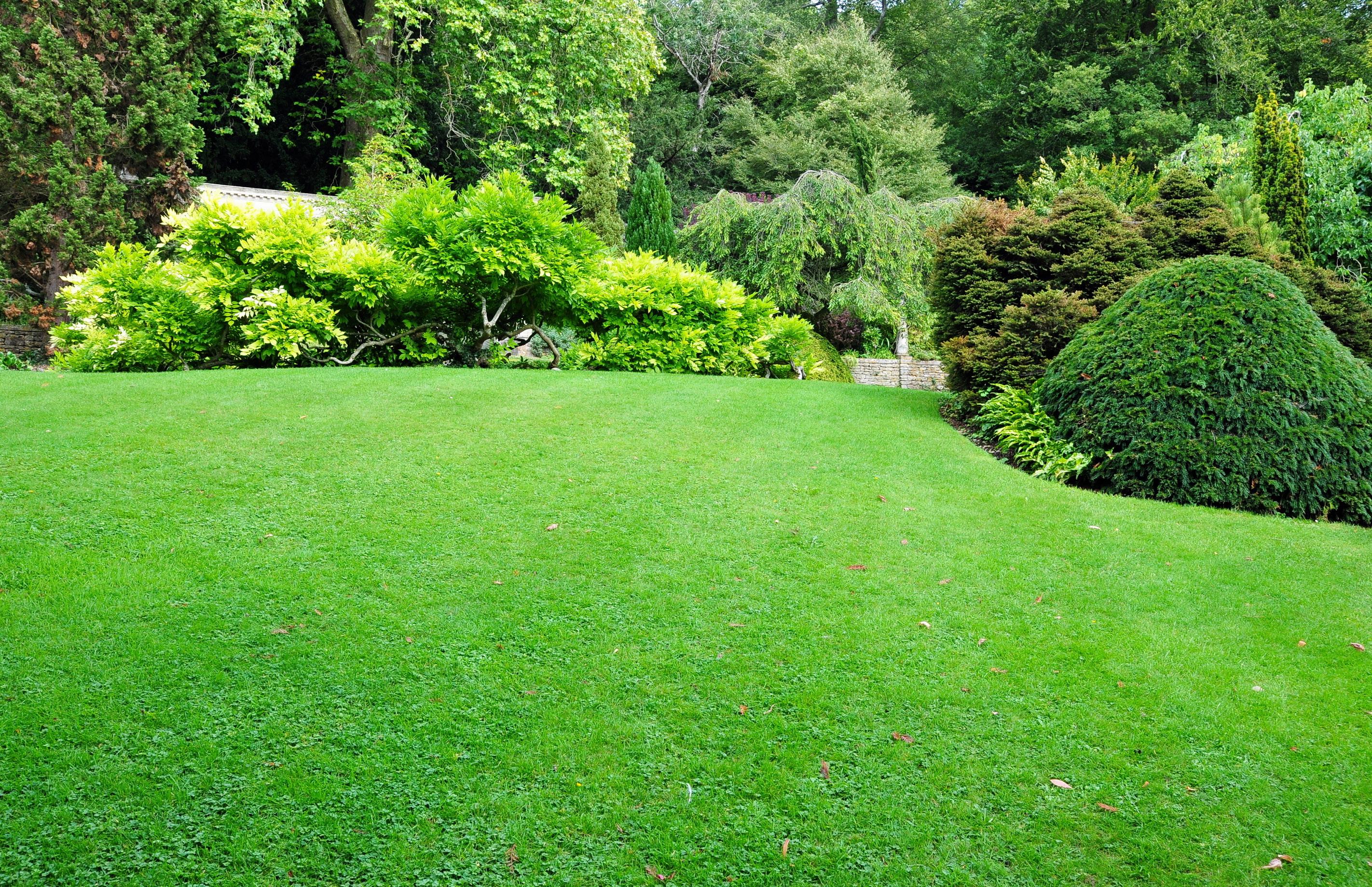
drier areas with minimum available irriga tion-Hydretain AKA “Moisture Manager”:
The product comes in both liquid and granular forms. The best way I can describe it comes directly from the com pany’s website:

Hydretain is a completely different con cept for root zone moisture management. Hydretain is not another wetting agent, surfactant or super absorbent polymer crystal. It is actually a liquid group of hy groscopic and humectant components that attracts moisture. In other words, by acting like tiny “water magnets,” they form microscopic droplets within the root zone. As a result, this process allows plants to utilize soil moisture which would other
wise be lost to evaporation. Now that’s good science.
The way it works is quite interesting. In the soil profile not all the water present is available to the plants. In fact, only about 50% of all water in the root zone can be drawn upon by plant roots before the re maining water adheres tightly to soil par ticles. At this point plant stress becomes so pronounced that the Permanent Wilt ing Point (PWP) signals plant death:


In closing, great thought and care must be given to any plantings during this deepening drought situation. Any and all added methods that ensure you won’t be replacing plantings are a mustdon’t leave anything to chance nor fickle weather patterns.
John Raffiani has been installing and ser vicing irrigation systems since 1966-more than 17,000 to date. He has completed projects from small residential systems up to 100 acre sites (in phases)-Homes, Shopping Centers, Cor porate Office Parks, Athletic Fields and Condominiums in New Jersey, New York, Massachusetts, Florida, Arizona and California. He has installed large scale landscape and drainage projects for the HOA market in Northern NJ.
Hydretain works as a “moisture aggregator”-it accumulates moisture and vapor between the soil particles into ad ditionally usable water for the plants. It is my number one recommendation not just for new plantings but for turf seeding and chronic dry areas in beds and turf.
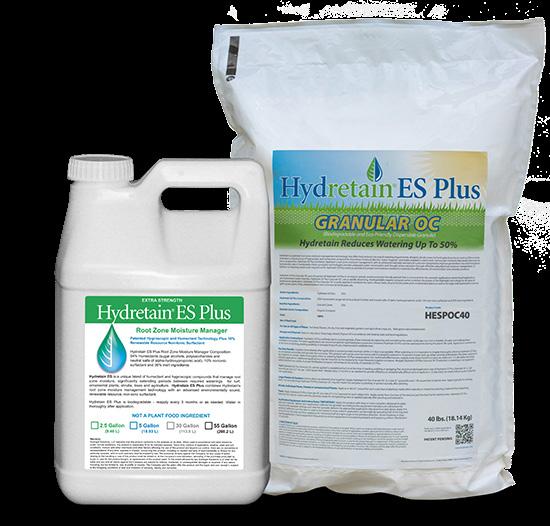
He is a Licensed Irrigation Contractor in NJ, an IA Certified Irrigation Contrac tor, an IA Certified Irrigation Technician, a Certified Back Flow tester, an NDS Cer tified Drainage Contractor, a Rutgers Certified Fertilizer Applicator and an IA Regional Authorized Instructor. He has written and taught many Continuing Education Credit courses and Webinars for the National IA, the NJ Irrigation As sociation, the CICA, the MNLA and the NJLCA. He is an active member of the IANJ, IA, NJLCA, NJTA and NEWWA.
The New Jersey Landscape Contractors Association (NJLCA) is a proven resource to the landscape contractor, green industry service provider and supplier, as well as the consumer. We are a community of green industry pro fessionals who are dedicated to advancing the integrity, proficiency and continued growth of the landscape and green industry. We do this through education, training and legislative advocacy.
New Jersey Landscape Contractors Association represents the entire Green Industry in New Jersey including landscape contractors, landscape architects, sod growers, nurseries, growers, garden centers, horticulturists, floriculture and the industries that supply them.
Through educational seminars, trade shows, social events, networking opportunities, membership meetings, maga zines and professionalism in all that we do, the Association is able to fulfill its mission.
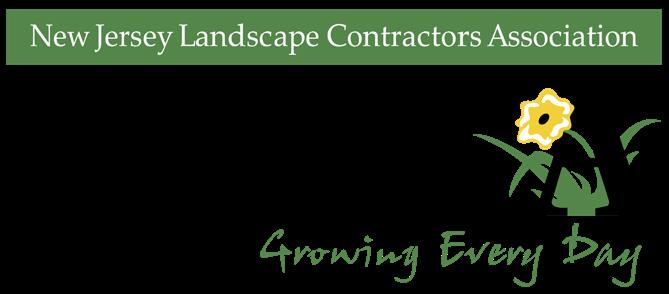


As business owners, one of the questions we ask ourselves over and over (and over!) is how can we maximize our revenue and profitability? One way for both the landscape and hardscape industry is fence installation. Adding this product offering to your customers will allow you to increase overall project sizes, which in turn will drive cash flow and profitability.

Over the last 10 years, the fencing industry has become more fragmented with fewer new “fence installation” companies being born and the landscape /hardscape industries becoming involved. We see many landscapers and in fact, landscapers are a growing percentage of our sales each year. However, most landscapers pass on doing fence jobsmostly because they have never installed fence before.

Whether your focus is on hardscape or landscape, fencing offers an added element to yard design, style and privacy. And offering fencing options to your customers will add not only to your revenue generation but also to your bottom-line profitability.
Fence installation is not difficult per se, it is like most things in our industry, muscle memory. The more you do, the easier it gets.
Fencing is also becoming a year-round business. As long as the ground is not frozen, fence can be installed, which means completing your projects deep into the fall is not a problem for enclosing the yard at the end. Two seasons ago, installers did not work for only 3 weeks. It was that warm. And, if your business model includes snow removal, this is a great offset to those slow warm winters.
Most installers end up charging 2X the cost of materials (not including cement). With a large crew, a fenced yard can be completed in a few hours. For a small crew, most yards can be fenced in a day.
by Adam Reisboard, Mr. C FenceMoreover, and most importantly, we see a lack of, and a lack of understanding. cash flow as a major reason for others’ business failures. Between the cost of the fence and the installation fees, your cash flow will grow on each job. This obviously allows you as a business owner more freedom in paying bills and funding payrolls.

Adam Reisboard is the owner of Mr. C. Fence, the #1 fence manufacturer in NJ. Mr. C. Fence was founded in 1983 and has been serving the Tri-State area since then. Mr. C. Fence does not compete with their customers as other manufacturers do.
Prior to owning Mr. C. Fence, Adam spent 20 years on Wall Street as a salesman and financial analyst. Prior to that Adam practiced law. He graduated with a Juris Doctor from Delaware Law School.
Mr. C Fence offers a winter class called Fence University where for a small fee, their experts can teach you and your crew the basics of fencing and fence installation.
 by Tom Canete, Canete Landscape and Snow Management
by Tom Canete, Canete Landscape and Snow Management
With the onset of winter weather being as unpredictable as it has been in past years the big question is, when do you gear up for winter services when you are operating a full service land scape company? In my 40 plus years of being a snow fighter I have found that November 1st has always worked as a great deadline date for my company to be able to provide winter ser vices. Landscape companies that provide snow services must prepare early in order to hit this deadline. As fall approaches you are still running your landscape company with many more land scape services and projects left to do before the end of the sea son. You ask yourself, “when will we find time to prepare every
thing that goes into managing a successful commercial Snow and Ice service business when old man winter is literally right around the corner.” There is much to do in preparing your winter services and at the same time you can’t back off of managing your landscape work at hand. This whole transition becomes a balancing act. So how do you transition seamlessly from the green industry into the white industry?? The answer is: Get Or ganized and Start Early!
Traditionally in the landscape industry in NJ we experience the Memorial Day rush. We start landscaping between March and April by putting our heads down and pushing 90 mph until the end of May. The following are the services we provide during this time frame. spring cleanups, 2 rounds of lawn applications, irrigation startups, 2 seasonal annual changeouts, Mulch instal lation, 1st round of shrub trimming, 4-6 weeks of lawn cuts plus any new Design/Build and enhancement work. Things seem to level off a little in July, which is when we start working on snow. I am lucky to have assembled a great snow operations team over the years. Having a dedicated team is crucial to running a landscape company that provides snow services or vice versa. We kick off in July by having the first snow meeting with our team. What we generally discuss are the topics reviewed at our year-end snow wrap-up meeting. Our Snow Team has this an nual wrap up meeting at the end of the winter season in March or April while issues and topics are fresh in everyone’s minds. We now have plenty of time to implement change prior to the next snow season. When August rolls around, we have already had a few weekly Snow Team meetings. We have created a couple electronic interactive lists that contain annual and new tasks
that must be taken care of before the snow flies. The first year out of the gates this list was very daunting. We had to take everything out of everyone’s heads, be it a small task or large one and dump it out into these spreadsheets. Our Snow Team and mechanics can log on from their computers or smart phones to update the status of the task(s) assigned to them. The entire team can view the snow operations progress made throughout the week. An automated daily email goes out as well to all team members listing any completed or partially completed tasks. At our week ly snow meetings we pull up our Snow Ops Task Lists on a large monitor and sit down at the round table to discuss. The function of this meeting is to assign pend ing snow tasks to our team members and mechanics, then discuss how the task will be handled and who needs to be in volved. Often there are multiple people assigned to a single task. Having weekly snow meeting has become imperative in our organization by keeping every one involved and in the loop. Other top ics covered are discussions of obstacles and opportunities, brainstorming ideas, new technology and decision making to gether as group. One of the paramount outcomes of having this weekly group meeting is it holds each team member ac countable and sets deadline dates.
Offering snow services is something that should never be taken lightly. If a snow contractor drops the ball, vehicular acci dents or slip-and-falls may occur, injuring or even killing people. What we do to run our businesses within the green and white industries is amazing. We deal with talent ed labor (or lack of it these days), clients, equipment/truck purchasing and repairs, weather, insurance, sales, contracts etc. There are a lot of variables that must be or chestrated in order to pull off this seamless transition, yet most of us manage to pull it off year after year. Some companies pull a
last-minute Hail Mary when others step up to the plate early in the season and own it!! I prefer the early season approach, rather than dealing with a last-minute fire drill. Every company should have their own cus tom “Snow Task To Do” list. Here is a list of some of ours.
• Post-season site damage inspec tions, repair any plowing dam age we did during the winter, re move stakes and remove onsite equipment.
• Clean, repair and store all snow equipment. Try to never put away broken equipment.
• Post-season phone calls or meet ings with clients to verify level of service was up to their standards.
• Early spring Snow Team Ops wrap up meeting
• Determine snow equipment and ice melt budgets as needed for the upcoming snow season

• Determine spare equipment parts to keep in stock if repairs are needed during snowstorms.
• Put purchase orders together for new equipment and ice melt.
• Year-round recruiting of opera tors, drivers and shovelers.
• Snow sales to build up current service zones and cut down on windshield time.
• Weekly Snow Ops Team meetings, July-November.
• Create snow site maps and storm action plans for all new sites.
• Schedule training dates for opera tors and drivers.
• Build plow, shovel and de-icing service routes.
• Show drivers and operators their sites to review site maps and storm action plans.
• Pre-existing property damage inspections. Document written along with photos. Share report with property management.
• Stake out sites to avoid curb damage and locate drainage, ob stacles, required fire and utility hookups.
Now sit back and pray to the Snow Gods to send us the magic ingredients!!
“Tomorrows success is planned and prepared today”.
Tom Canete has provided winter services for over 38 years and has developed the most efficient and operationally superior snow fight ing team in his market. He can boast his awardwinning landscape design and construction company, as well as Canete Garden Center, are considered the best in the industry. Canete Snow Management, Inc. has been recognized as one of the Top 25 Snow Contractors nation wide by GIE Media Snow Magazine. Canete Snow Management took part in a historic event at MetLife Stadium during Super Bowl XLVII, the first outdoor, cold-weather Super Bowl ever. This massive task was to clear an 80,000-seat facility requiring a work force of up to 500 peo ple on site, sometimes with little notice. He took on the challenge to showcase his team, pro cesses and technology. Tom’s award-winning solutions have made him a nationally-known expert, speaking on snow removal practices and snow management philosophies. His pur suit of best-in-class status will never be satis fied but Tom enjoys the challenge.


Native plants are a good way to incorporate sus tainable vegetation into yards for clients who are environmentally minded. Native plants are adapted to local climate and soil conditions, requiring less water, fertilizers, and pesticides than non-native vegetation. For landscapers who have property owners looking for native alternatives to non-native vegetation, below is an option to meet your clients’ needs.
Sassafras (Sassafras albidum), a mem ber of the laurel family (Lauraceae), is a slender, flowering tree, that can grow up to 60 feet high and can spread up to 40 feet at maturity.
A distinguishing characteristic of sas safras is the variety of leaves that can grow on each tree (Photo 1). The leaves can have one, two, or three lobes and can be remembered by their shapes as the leaf, the ‘mitten’ or the ‘ghost’ when identifying this tree. These leaves pro vide striking foliage in shades of yellow, orange and red in the fall.
Like the American holly, sassafras has separate male and female plants, so plant both types if berry production is desired. Sassafras can grow into dense thickets due to sucker root growth. Remove these
if single trees or small stands of sassafras are desired on the property.

The fruits of sassafras are readily eat en by a variety of animals such as birds, black bears, beaver, rabbits and squirrels; also, white-tailed deer browse the twigs and foliage. In addition, sassafras is an important host plant for many butterflies and moths.
Sassafras grows best in dry soils but it does not do well in moist soils, and can develop root rot in wet, clay soil. Sassa fras grows best in slightly acidic to neu tral soils (pH <7.0). Sassafras does well in open, sunny areas and can tolerate par tial shade. It is found in woodlands, fields, and along roadways.
Sassafras is a great choice to use in stead of non-natives like Callery Pear (Pyrus calleryana) and Tree of Heaven (Ai lanthus altissima), which is the preferred host tree for the invasive Spotted Lan ternfly (Lycorma delicatula).
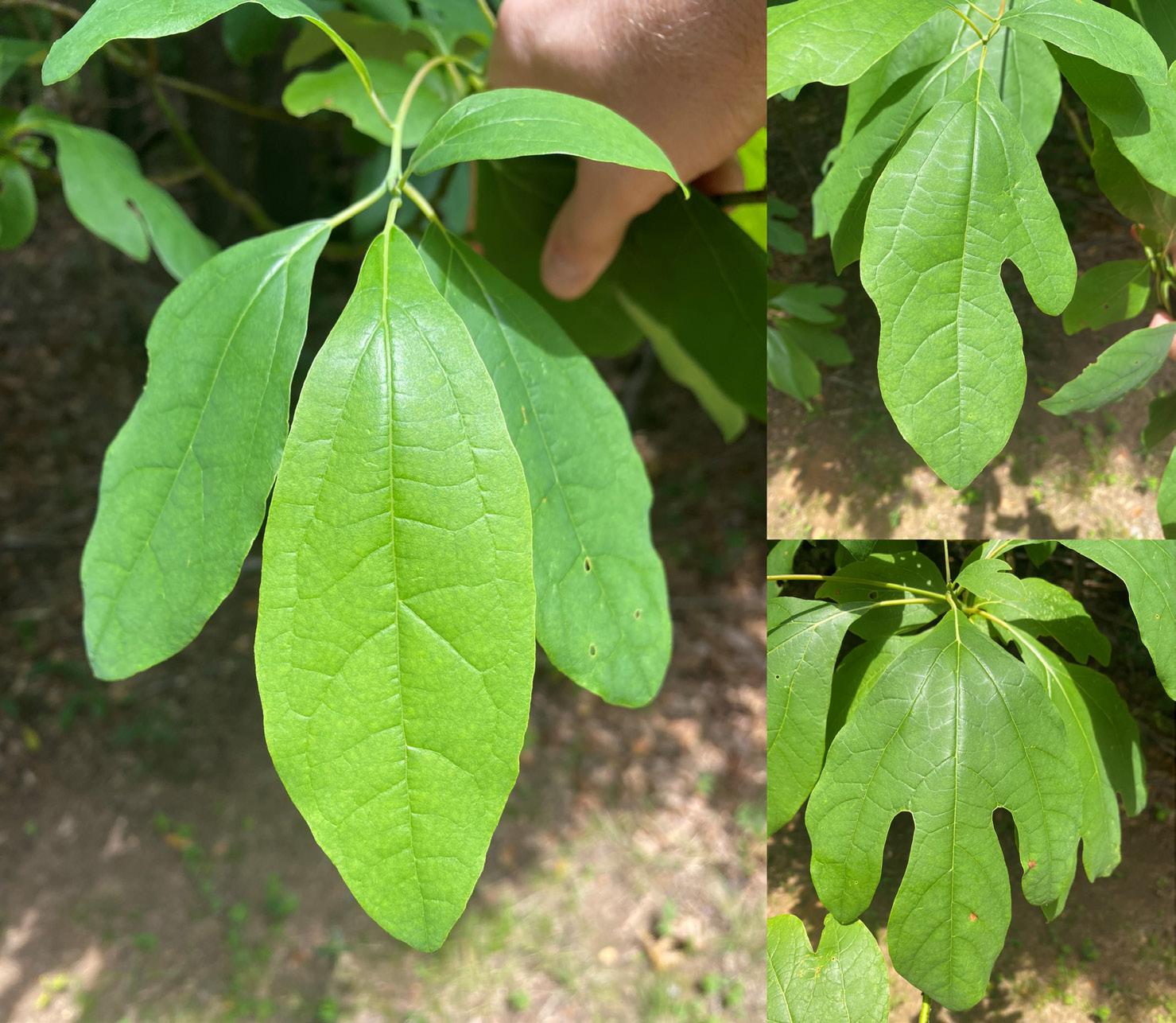

You can find nurseries in New Jersey that sell native plants by visiting the JerseyFriendly Yards website at http://www. jerseyyards.org/jersey-friendly-plants/ where-to-buy-native-plants/.
Steven Yergeau, Ph.D. is the Dept. Head and Agricultural Agent for Rutgers Co-operative Extension of Ocean County. He is also Assis tant Professor for Ocean & Atlantic Counties.
For more info visit http://ocean.njaes.rut gers.edu.



The impact we have on our planet has become more apparent in recent decades and consumers are not the only ones looking for more eco-friendly solutions. More businesses and municipalities are seeing the benefits of going green from both a moral and financial perspective, from minimizing the short and longterm risks to our health to meeting the growing demand for healthier solutions.
But even when tree and turf care professionals search for alternatives to traditional chemical-based products, navigating the wholesale market can be challenging. There is no clear-cut definition of what healthy lawn care is, and while products are regulated, many of the businesses buying and distributing these products are not.
With that in mind, it’s crucial for
products. Is their website drawing your eyes straight to price cuts and seeminglyempty promises, or are the products categorized thoughtfully? A strong wholesaler will sell you on their visionnot their products - and let money be a by-product of the value they provide. For example:
you see real-life examples of growth in the landscaping industry where the wholesaler played a key role?
lawn care professionals looking to invest in greener alternatives to do their research and due diligence early on. A key component of this is putting serious thought into building a relationship with the right wholesaler.
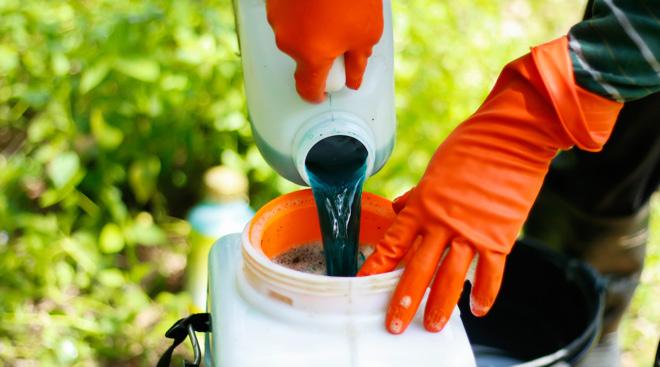

One good way to get to know potential wholesalers and weed out the ones only seeking a profit is to see what they’re doing on their end to educate the community. Knowledge is power, and industry leaders and wholesalers who are truly passionate about protecting the environment will make it known. Look for any webinars, conferences, and trade shows they’re promoting, as well as what topics will be covered.
Another thing you can check is how the wholesaler is positioning their
“Draycott realized Tech Terra Environmental could be of service to the green industry by becoming a single source for a wide range of natural products at manufacturer prices that would meet the needs of landscapers and lawn care providers.”

Last but not least, wait until your products come in, then see if you can replicate similar results. Of course, all landscapes are unique and various factors can alter how well a product will perform, like the season, climate, kind of plants being treated, and more. So, if you don’t see a notable difference in your landscape in the timeframe promised, it might be a good time to rethink your approach.
One of the most important aspects of starting or growing a business is choosing the right wholesaler to get your products from, and it’s not always easy. The good news? You can still reach great results while being more intentional with the relationships you’re investing in. With an open mind, the right wholesaler, and a shift away from conventional lawn care, you can achieve that lush lawn while minimizing the overall impact you’re having on the environment.
You should also find out how knowledgeable of a source each potential wholesaler is for the products they’re distributing. Is the wholesaler providing specific information like product labels and testimonials that support the legitimacy of their partnerships? Can
Tech Terra Environmental offers ecological solutions for tree and turf care professionals. We specialize in environmentally conscious application products to improve plant and soil health for lawn care providers, landscape contractors and municipalities & schools in the tree and turf care industry. Please call to speak to a specialist at 609.468.1905
I’m sure we have all anticipating the end of this very hot, very dry summer, and looking forward to the crisp days of fall. Have you ever noticed that you see a lot more deer in the fall than other times of the year? Ever wonder why the deer are move visible and why we should be more vigilant when driving during this season?
If you ask around, the most common answer will most likely be hunting season. Although there are other factors, that I believe play a larger role, hunting season definitely plays its part. In New Jersey this year, archery season starts as early as September 10th, and continues to be highly active through the end of the year, with a more limited season carrying on through mid-February.
Ironically, fall season is often when hunters see the least number of deer. Ask any hunter, and most will admit that their scouting and trail cams show plenty of traffic, right up until opening day of hunting season. This doesn’t necessarily mean the deer aren’t there anymore, but often some of these deer do move into safer areas, such as suburban backyards. Regulations do not allow archery hunting within 150 feet of any building, but extends it to 450 feet of any school or playground; the 450-foot regulation applies to all firearms. Now combine that with the most densely populated state,
and you can see that hunting space can be very limited. Regardless, whether it’s deer escaping to the safety of your backyard, or a gunshot that sends a deer frantically fleeing across a road, hunting season certainly plays a role in the increased visibility of deer during the fall season.

A common NJ fall tradition is to travel to the many popular farms found throughout our Garden State. Whether it’s picking apples, pumpkins, or other farm activities, vehicular traffic can be very congested around these sought out destinations. Not surprisingly, deer were enjoying these same fall treats (minus the hayrides!) well before we made it popular. This is also the time of year when deer start to think of putting on some extra weight for the winter, in case weather conditions are harsh and food becomes more scarce. Fortunately, mother nature has provided many falling fruits this time of year, especially crabapples and acorns, that help the deer in this process. If you have an apple or crabapple tree on your property, you will be hard pressed to keep deer away from it, as crabapples are certainly one of their fall favorites. And yes, not only is an acorn a fruit, it is also a vital food source of the white-tailed deer. They not only depend on the calories and nutrition of the acorn during the fall to pack on the pounds, but also throughout the winter to help them survive.
Last, but certainly not least, is the deer’s mating season, also called “the rut”. In New Jersey, the rut generally runs from mid-September through December, with environmental factors sometimes affecting the time frame on either end. Although the male deer, or bucks, tend to hang out together (called “bachelor groups”) for most of the year, once their hormones start to kick in early during the rut, they separate and start to look for mating territories of their own. This dispersal can lead to sightings of deer in locations they are not normally seen. The young and/or less dominant bucks get pushed out of prime territories in search of locations not currently defended by a dominant buck. Coincidentally, these young bucks are often the most commonly seen casualties along the road, as October through December continually trends to be the peak of car/ deer collisions in New Jersey. The young bucks travel much greater distances than normal, and their tunnel vision focus is directed at finding a mating territory of their own. This combination of increased road crossings with poor decision making lends to more car collisions.
The rut is also the time when many of us see the larger bucks, especially in “safer places” (non-hunting zones) such as our backyards. Deer are a polygamous species, where a dominant buck defends
a “harem” of doe (female deer). As hormones dictate much of the bucks’ actions, they focus on holding and defending their territories, so that they may pass their genes along to as many doe as possible. During this time, bucks are typically blinded with intent and focus, and will follow closely behind a doe until her hormones tell both of them “the time is right”. In New Jersey, the peak of this season is often late October into mid-November, when the bucks can be more often seen during daylight hours. That being said, keep clear of a buck who is focused on a doe, as they may see any interference as competition.
Hopefully this helps explain many of the reasons that deer are more visible during the fall season. They fatten up on fall fruits for the winter, they flee when being hunted, and bucks of all ages are running around frantically trying to mate. With deer in practically every nook and cranny of our state, extra precaution should be taken while driving during the fall. So plan your hayrides, pick your apples and pumpkins, and go visit the many fine farms of our Garden State; just remember to use a little more vigilance while driving to ensure safe travels!
Christopher J Markham is a wildlife biologist and President of New Jersey Deer Control, a deer repellent spraying service that covers the state of NJ. He will be using caution when driving as he and his family enjoy his favorite fall activity, attending Rutgers football games.

Incorporating native plants into the New Jersey landscape has emerged as a growing market trend as homeowners and businesses are becoming increas ingly educated about the important ecosystem services that are provided by native plants, in addition to the aesthetic elements that they add to the landscape. There are also a growing number of native plant nurseries and landscape professionals in New Jersey who are propagating and maintaining native species. State-wide conservation efforts are encouraging the planting of lowmaintenance native plants that support pollinators along roadways and coastal communities are developing plans to require green infrastructure plantings to mitigate stormwater. As such, there is a tremendous opportunity for New Jersey’s green industries to sustainably produce and maintain the native plants that are making the Garden State a greener place to live.
However, proper care of native plants requires an understanding of their optimum growing conditions and specific practices that encourage overall plant health while protecting beneficial insects. Additionally, there are various pest and disease issues that may affect native plants and require a comprehen sive native plant integrated pest manage ment (IPM) program. To support these efforts, Rutgers Cooperative Extension is currently working on developing sciencebased technical information and educa tional programming on topics such as propagation methods, pest and disease control, and fertility requirements that are specific to native plants that are grown in New Jersey. These resources will help to increase the competitive ness of this industry through enhanced marketability, cost savings, and reduced pesticide use.
A brief needs assessment survey has been developed to gain a better under standing of the educational materials
and technical resources that are needed in the green industries to help promote the production and marketability of na tive plants.
If you operate a landscape business, nursery, or greenhouse in NJ and grow native plants (or have an interest in start ing to grow native plants), please fill out this 5-minute online survey to help Rut gers Cooperative Extension develop the resources and programs that are needed to support these efforts.
Survey Link: https://go.rutgers.edu/ojkdrelv


Some owners focus on growing their profits, while others are obsessed with sales goals. Have you ever considered making it your primary goal to set up your business so that it can thrive and grow without you?
A business not dependent on its owner is the ultimate asset to own. It allows you complete control over your time so that you can choose the projects you get involved in and the vacations you take.

When it comes to getting out, a business independent of its owner is worth a lot more than an ownerdependent company. Here are five ways to set up your business so that it can succeed without you.
Jack Stack, the author of The Great Game of Business and A Stake in the Outcome wrote the book on creating an ownership culture inside your company: you are transparent about your financial results, and you allow employees to participate in your financial success. This results in employees who act like owners when you’re not around.
If you’re not quite comfortable opening the books to your employees, consider a simple management technique where you respond to every question your staff brings you with the same answer, “If you owned the company, what would you do?”
By forcing your employees to walk in your shoes, you get them thinking about their question as you would, and it builds the habit of starting to think like an owner. Pretty soon, employees are able to solve their own problems.
Identify the products and services which require your personal involvement in either making, delivering, or selling them. Make a list of everything you sell and score each on a scale of 0 to 10 on how easy they are to teach an employee to handle. Assign a 10 to offerings that are easy to teach employees and give a lower score to anything that requires your personal attention. Commit to stopping to sell the lowest scoring product or service on your list. Repeat this exercise every quarter.
Are you the company’s best salesperson? If so, you’ll need to fire yourself as your company’s rainmaker in order to get it to run without you. One way to do this is to create a recurring revenue business model where customers buy from you automatically. Consider creating a service contract with your customers that offers to fulfill one of their ongoing needs on a regular basis.
Finally, make sure your company
by Frank Bourquecomes with instructions included. Write an employee manual or what MBA-types called Standard Operating Procedures (SOPs). These are a set of rules employees can follow for repetitive tasks in your company. This will ensure employees have a rulebook they can follow when you’re not around, and, when an employee leaves, you can quickly swap them out with a replacement to take on duties of the job.
You-proofing your business has enormous benefits. It will allow you to create a valuable company and have a life. Your business will be free to scale up because it is no longer dependent on you, its bottleneck. Best of all, it will be worth a lot more to a buyer whenever you are ready to sell.
If you would like to learn more about how you can systemize your business and have it more automated and less owner dependant, Frank Bourque helps business owners’ structure their business to effectively face growth. Contact Frank and his team at 613-866-0733 or by email at frank@frankbourque.com to schedule a discovery call.
Frank is an award-winning hardscape pro fessional, speaker, writer, consultant, and en trepreneur with an extensive background in business and hardscape construction. He has been a part of the Green Industry for over 20 years as a business owner. He has spoken at Hardscape North America, GIE Expo, Landscape Ontar io Congress and many more. He is also a certified ICPI & NCMA instructor and Certi fied Landscape Horticultural Technician.

It is time to review the health plan coverage choices for you and your employees, as the coverage selection process begins November 15th.
AMT can help you find a plan that better fits your needs.

The deadline for changing coverage is December 15th for a January 1st coverage effective date.
Contact your AMT account representative to schedule your AMT Health Plan Checkup today by visiting www.amtcheckup.com, or call (973) 379-1090.

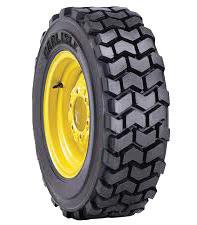


I don’t know about any of you reading this, but a room with a view was never my aspiration. The closest thing to a room with a view for me was windshield time on my way to our next client. If I had my choice, I’ll take that view anytime. The “room with the view” in the photo was my room at The Hospital for Special Sur gery in Manhattan.
The title of this article is not what it may seem. A room with a view is some how always thought of as a beautiful place with a beautiful view. It would also be safe to assume, from your room with a view, you are magically relocated to a place of tranquility and serenity. In my situation, that was not my window.

I’m writing today with a personal story about health, my health honestly. I hope my story will make some of you think about your personal health and your future. In 2017, after suffering with constant pain, I had my left hip replaced. I was diagnosed in 2015 but I put joint re placement off until 2017. Why you might ask? “There is never a good time of year or a slow season anymore.”
Any contractors out there that have not said this before? I know I did for many, many years. The customers and busi ness always came first, after my family of course. For anyone owner/operators, this may be all too common a phrase. From my perspective, this is normal in the con tractor world. We tend to put almost ev erything before ourselves. If you are do ing this, you are not alone. The question is, is it healthy? Probably not. At least in my case it wasn’t.

Fast forward to December 2021, I had my left knee replaced and May, of this year, I had my right knee replaced. So for anyone thinking I am worthless, you are very wrong. Just in new parts alone I am
worth a lot more now than I was previ ous to my surgeries. I don’t know the cost of titanium, but due to “supply chain is sues,” I am worth a fortune in scrap metal alone! My joint replacements were in ad dition to other surgeries I have had since January of 2021. The moral of the story, YOU NEED TO TAKE CARE OF YOURSELF!
My waiting for replacement surgeries was also dictated by my pain tolerance. If you have a high tolerance for pain, you may be able to put procedures off until the clock and calendar work in your favor. Sometimes you experience no symptoms or pain and refrain from a visit to the doc tor. If you are not going to the doctor on a regular basis, please start now.
How does all of the above relate to our industry? If you are the one person responsible for your operation, how long can your operation function without you being present? This is something to be considered carefully if you are that one person. It might be a good idea to consid er some contingency plans in the event you are incapacitated for an extended period of time. Clients will be very un
derstanding of medial issue right up un til it effects them, especially in the com mercial, corporate industry. They will be quick to offer well wishes but the next words out of their mouths will be, when are you arriving at my facility to provide service? This is not fear mongering. I’m just making the point, this can happen to any one of us. Make plans so you don’t lose your mind and your business.
During my tenure in business, I could write a book on ways to get unpleasantly surprised, as can most of you. My goal is
to help prevent that from happening on a regular basis. No matter how prepared you are, things always happen. I learned to prevent the most likely from smacking me in the back of the head when
I least expected it. The most important interven tion you can make, your health. Take it from me.

I have had 8 surgeries in the past 13 months. Don’t be me!
After 40 years in business, I am now happily retired. I never thought I could go from 100 miles per hour with my hair on fire, 7 days per week, to a complete stop. Turns out, I am really good at it! My big gest wish would be for all of you arrive at this point when the time best suits you and your family. Don’t let your health de ter your wishes and dreams from becom ing a reality. Take care of yourself so you can take care of you in the future.
By the way, just one of the many rea
sons I love trade organizations like the NJLCA, is, you will find out you are not un like most of your peers. The more you get involved, the more you will find we are all very similar and have similar stories. You may have heard me say before, lets el evate ourselves to the top 10 percent of our industry through organizations like the NJLCA. Let the bottom feeders fight for the bottom 10 percent.
With 40 years in the Green/Winter Services Industry as an owner/operator, Pat Donovan possesses a unique skill set and experience level which is sure to benefit the GREEN/SNOW arena. Pat’s credentials include; Licensed NJ Home Improvement Contractor, Licensed NJ Pesticide Applicator, Licensed NJ Pesticide Business, Licensed NJ Plant Dealer, NJ Licensed Fertilizer Applicator, OSHA 40 hour HAZWOPER Certified, National Safety Council’s Defensive Driving Certified, ICPI Certified, NCMA Certi fied, Certified Nursery and Landscape Profes sional, Licensed Tree Care Operator in New Jersey, ASCA Certified Snow Contractor, Class A CDL Operators License, member of NJLCA, SIMA, NALP, ASCA and contributing writer nu merous trade publications.
by Anthony Morreale, Tri-State Safety Solutions, LLCIn order to maintain compliance with Federal Motor Carrier Safety Administration regulations, the State of New Jersey has adopted the Federal Motor Carrier Safety Regulations (FMCSR) at N.J.S.A. 13:60 for intrastate commercial motor vehicles 10,001 pounds and greater. These updated regulations are in effect.
This adoption includes revisions to the defini tion of a commercial motor vehicle (CMV) op erating on highways in the State of New Jersey. While the vast majority of CMVs operating in New Jersey will be unaffected by this change, a subset of vehicles that were previously not included in the definition of a CMV in New Jersey will now be considered such. As a result, these vehicles will now be subject to FMCSR as adopted in N.J.A.C. 13:60. The following table outlines the changes in the new adoption for each vehicle type: Type 1: GVWR, GCWR, GVW, or GCW 10,001 or more pounds (whichever is greater); Type 2: Eight or more passengers, including the driver for com pensation; Type 3: Sixteen or more passengers, including the driver; or Type 4: Used to transport material found by the Secretary of Transporta tion to be hazardous under 49 U.S.C. 5103 and transported in a quantity requiring placarding under regulations prescribed by the Secretary under 49 CFR, subtitle B, Chapter I, subchapter C.
For more info, contact Anthony Morreale at 732-551-3833.
primary operations and overall vision was certainly conveyed in the results.
Let’s look at the three primary challenges that came to light in survey results.
Challenge #1: Not enough time to do a great job
The following article was written by Lindsey Getz and based on a recent Landscape Leadership survey of 50 in-house marketers at lawn and landscape companies in the United States and Canada.
Is marketing a struggle in your lawn and landscape business?
If you’re a lawn care or landscape business owner or manager, you might feel disconnected from the marketing effort or unsure whether it’s actually achieving your big-picture goals. Perhaps you have an idea in your head of what the marketing efforts should be accomplishing but, if you’re honest with yourself, you aren’t overly invested in how it’s actually playing out.
If you’re handling your company’s marketing duties, you might sense that disconnect as well—but feel that others at the company don’t really understand or value your role. You might feel as though you’re off on your own.
Landscape Leadership recently conducted a survey of in-house marketers (at green industry companies) to pinpoint some of their most significant challenges. A sense that marketing efforts were disconnected from the company’s

“Lack of time” was cited as survey respondents’ number one challenge when it came to their marketing efforts.
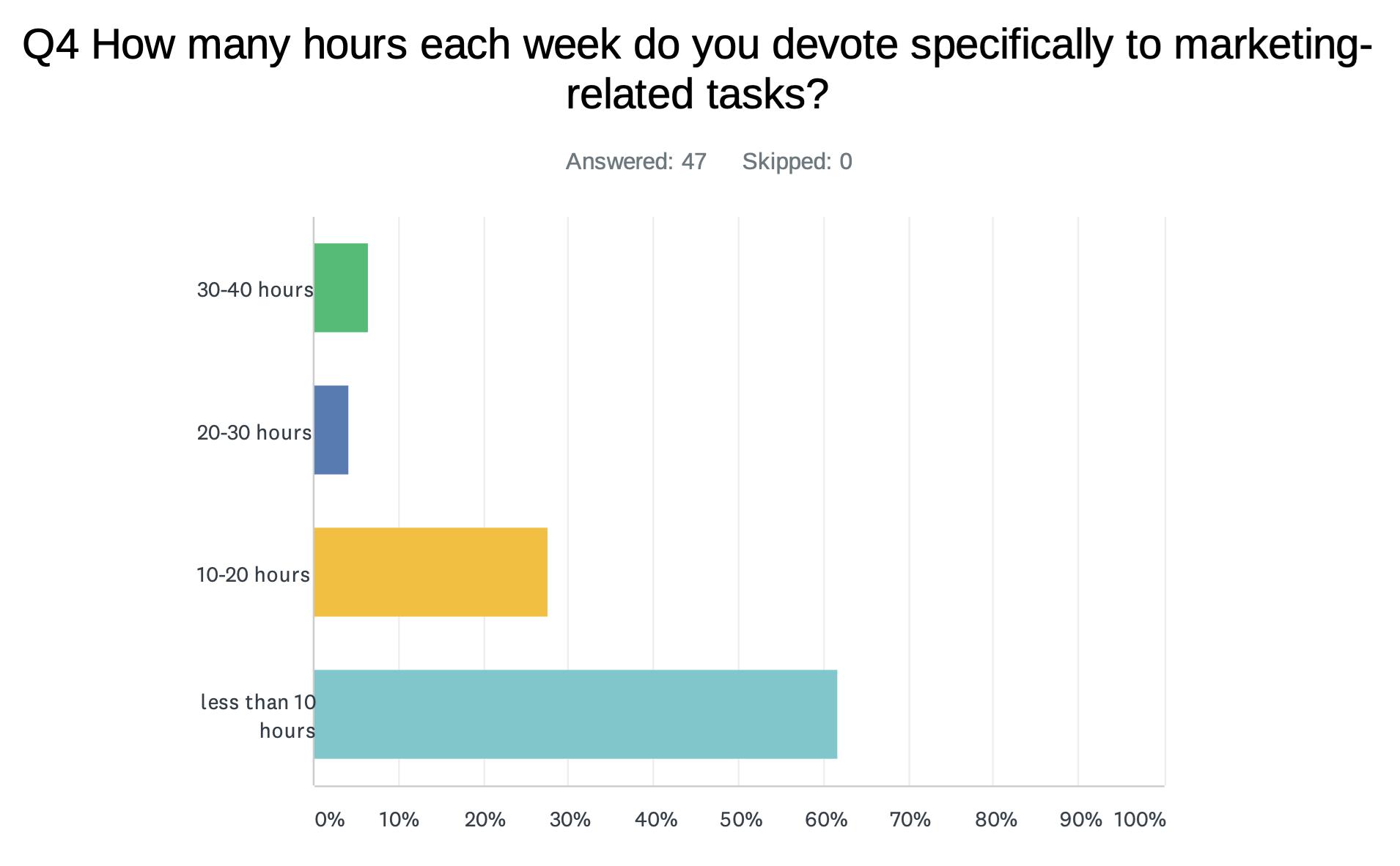
This is something that Landscape Leadership’s CEO and Founder, Chris Heiler, says was not surprising to him as in many cases – maybe even the majority – marketing responsibilities fall in the lap of an administrative or salesperson. It’s incredibly rare for lawn and landscaping companies to have an in-house marketing
person who is solely dedicated to that role. It’s often one of the multiple hats a team member wears.
“Because of that, marketing becomes an afterthought,” Heiler admits. “More than 60 percent of survey respondents said they commit less than 10 hours per week to their marketing role. Only 10 percent of those surveyed spend more than 20 hours of their week on marketing. Marketing simply isn’t a priority.”
Chad Diller, Landscape Leadership’s Director of Client Success, experienced this at his former employer of 13 years, Tomlinson Bomberger Lawn Care, Landscape, & Pest Control in Lancaster, Pennsylvania. He spent many years as an account manager while also pioneering most of the company’s digital marketing efforts. Diller suggested to create a
full-time, in-house role, and ultimately became the Director of Marketing.
“Initially, their vision for an in-house marketing role was for a part-time position but I wasn’t interested unless I was able to dedicate all my effort towards the role,” Diller recalls. “After some consideration and consultation with a business consultant, the company’s leadership began to see the tremendous opportunity in creating a full-time marketing position so someone internally could be truly dedicated to that role.”
When there isn’t enough time spent on marketing the result can be convoluted messaging and a lack of big-picture goals the company can rally around.
In fact, less than 20 percent of those surveyed believed that their company had a clear and well-thought-
out marketing strategy. That wasn’t surprising to Heiler, either.
“When marketing’s role is treated more as an afterthought than a priority, then very little time will be spent on developing and implementing a long-term strategy,” he says. “This is supported by the fact that 34 percent of those surveyed claim their company’s marketing strategy changes every year.”
“marketing is the first thing to get cut.”
And of survey respondents, 25 percent say they have no annual marketing budget at all.

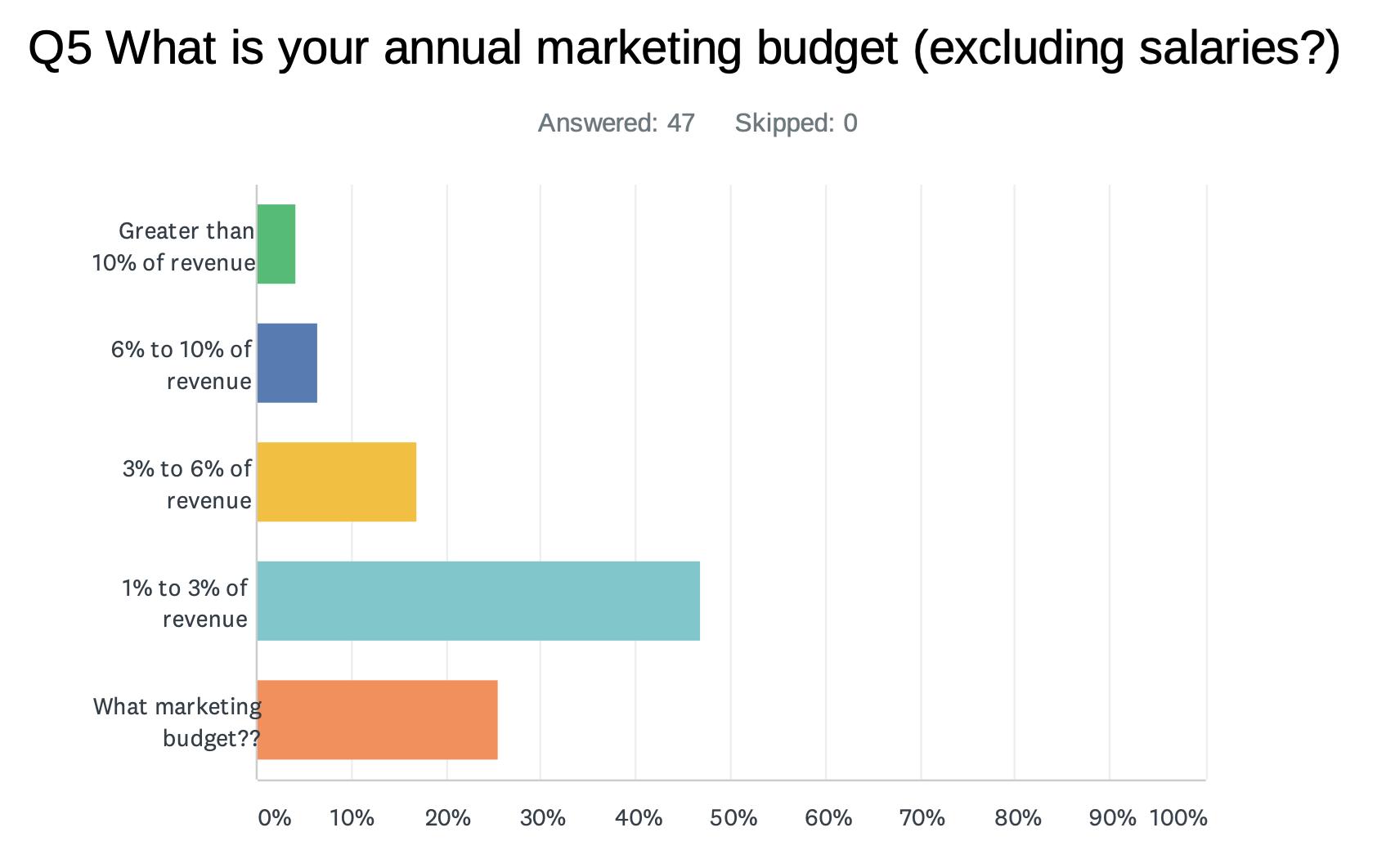
What many in-house marketing individuals do seem to have is a fair amount of freedom. Heiler says that he was surprised to see that more than 93 percent of those surveyed felt they had adequate autonomy and authority related to their in-house marketing role.
“However, while these folks have autonomy and authority in their role, what they don’t have is adequate marketing budgets and the time to invest in marketing,” Heiler continues. “And buyin from the rest of the organization can be hard to come by. Only 40 percent of those surveyed are very satisfied with how their role is respected within their organization. I have plenty of anecdotal evidence from 20-plus years in the industry to support this as well.”
Another significant challenge that inhouse marketers say they face is the lack of buy-in from the rest of the company. Unfortunately, when there is a lack of buyin from decision-makers, it can impact the marketing budget. One respondent said that when budget trimming needs to be done,
This has been the case for Heather Kortokrax, Director of Marketing for TruNorth Landscaping in Traverse City, Michigan. She says that the owners have excellent buy-in, but when it comes to some of the things that she needs help with from managers and foremen (like customer reviews or photography), the buy-in is not there.
To attempt to create more buy-in, Kortokrax says she has implemented two incentive programs—one for photography and one for customer reviews. Those in the field sending her the most and the highestquality photos have the opportunity to win a cash incentive. The same goes for inspiring clients to submit reviews. Kortokrax says it’s the foremen that tend to build great relationships with the clients but aren’t always asking for a review request.
Ann Lally, Marketing & Sales manager for AgriLawn, Inc., in Oklahoma City, Oklahoma, expresses a similar disconnect between what’s happening in the field and her marketing efforts back at the office. She says that it’s hard to work with social media or create blog content when she’s not the one in the field seeing what’s happening on the properties.
Because of that, she has decided to
Whether you are looking to buy new or used, rent equipment, or have your existing fleet serviced, Foley, Incorporated has what you are looking for. In addition to Cat equipment, we offer all types of allied products, such as air compressors, light towers, trenchers, wood chippers, heaters, small compaction equipment and more.

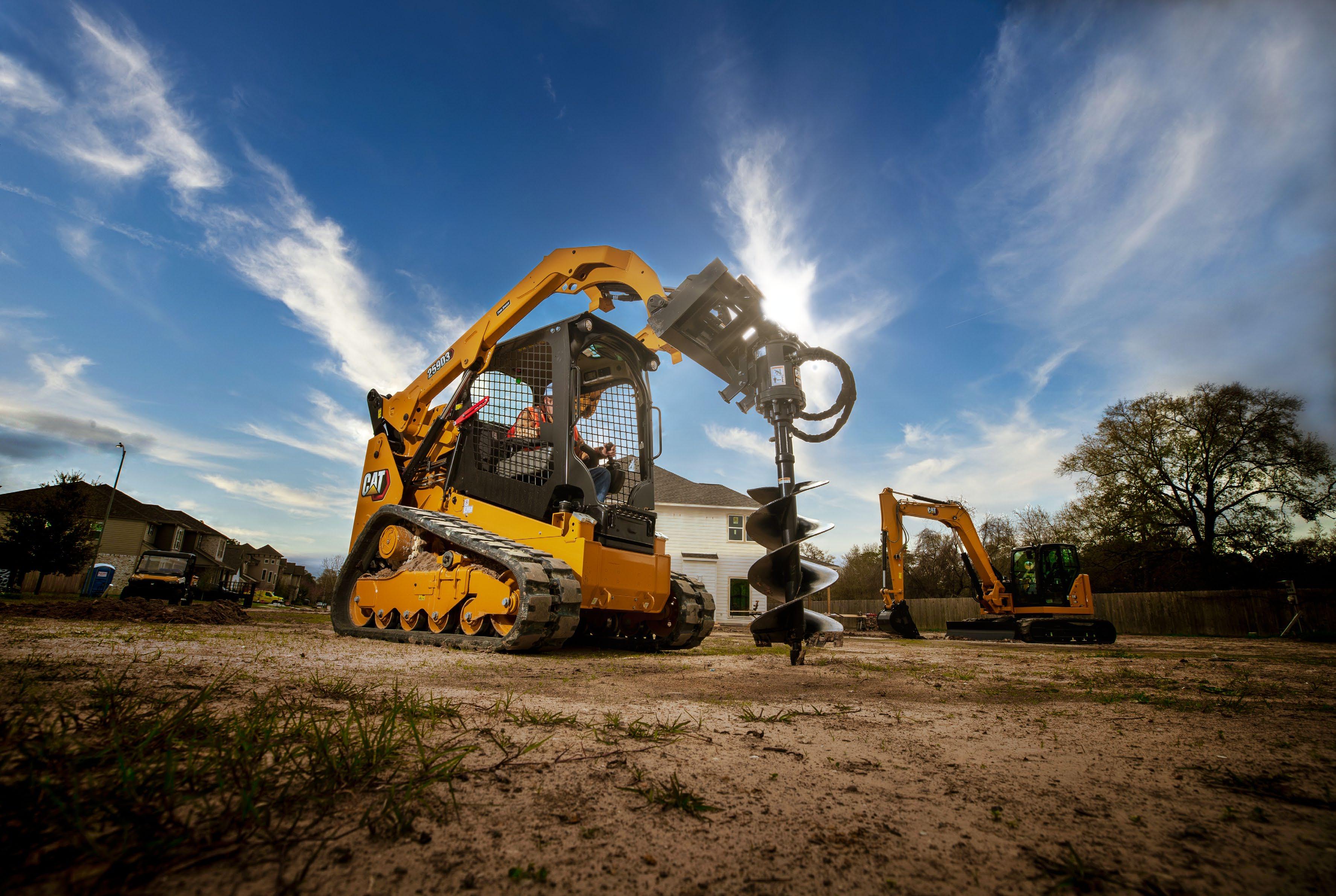
Serving all of New Jersey, Staten Island, New York, Eastern Pennsylvania, and New Castle County, Delaware

get more connected by going on “ridealongs” with the technicians. This not only gives Lally the opportunity to learn more about what’s happening in the field but she has the chance to take plenty of photos and video.
Diller says that making connections with the crew and other team members at the company is essential when it comes to helping inspire their buy-in. They have to be able to see why the company’s marketing efforts should matter to them.
“As a marketer, you need to think about how or why your role should matter to others at the company,” Diller explains. “For instance, if I’m a crew leader, I care about getting my hours in and getting the work completed as smoothly as possible. But as a marketer, you’re trying to help the company bring in more ideal customers so that the crew leader’s job becomes easier. This way they won’t have to deal with as many frustrating customers. Alignment between your mutual goals can go a really long way with buy-in.”
Diller says that in his former marketing role, he was often visiting job sites and developing authentic relationships with crew members and technicians. He was always looking to educate and inspire team members to get onboard with the company’s vision.
“When you’re trying to sell your vision for the company’s marketing strategy, it’s your responsibility to create enthusiasm,” he explains. “I would talk about how the crew isn’t just building a patio, they are helping real people create memories
and have a better quality of life. I would explain by appearing in a video or by letting me take pictures of them working, they’re part of this greater purpose.”
Misalignment between sales and marketing is also a common problem in lawn and landscape companies. The survey found that only 25 percent of respondents believe they communicate and work well with those on the sales team to drive growth for the company.

This is a missed opportunity, says Heiler, and it has financial repercussions.
“Companies are leaving a tremendous amount of money on the table because of this misalignment between marketing and sales,” he says.
Diller says it’s important for departments within the company to remember that they cannot operate in silos if the company wants to strive for united goals. Marketing should ultimately be what drives leads into the pipeline for the sales team. And sales needs to provide feedback regarding if the marketing initiatives are working.
“Salespeople also have to understand what the marketing priorities and specific marketing campaigns are,” he continues. “Unfortunately, there is usually a big misalignment in that the sales team is not clued into what marketing is doing. They don’t know what marketing assets exist. They aren’t familiar with the campaigns that the marketing department is running. They certainly don’t need to be involved in
the minutiae, but they should know the plan—the main intentions and priorities of the lead generation process. And, if possible, they should have some voice in the planning process.”
“At the end of the day, a strong marketing strategy drives better sales leads and that makes the salespeople’s job easier”, says Diller. Marketing managers will have an easier time getting sales team buy-in if you can show them the value of how it will help their process. When they’re getting better-qualified leads, they’re making more sales.
These challenges are no small feat to overcome for lawn and landscape companies across the country. From survey respondent data as well as anecdotal evidence, it’s fair to say that the in-house marketing role clearly needs more attention and support.
Heiler says it like it is: “Company owners and management pay lip service to marketing by talking about how important it is, yet when it is time to spend money or make an internal marketing hire, they put their wallets away.”
At the end of the day, everyone must be on the same page.
“How can someone do their job effectively if they are an afterthought to most of those in the organization? An inhouse marketing person is not a team of one,” Heiler says. “They need the full support of coworkers within all levels of the organization.”
A big thanks to Lindsey for writing this article and summarizing the results of the survey. If you want more insight like this then please consider subscribing to the Landscape Leadership blog. We currently have over 5,000 lawn and landscape professionals as readers.
Chris Heiler is the founder and CEO of Landscape Leadership. He has been in the green industry for over 20 years. Aside from leading the team at Landscape Leadership he enjoys speaking at green industry events across the country sharing his insights on marketing and sales. Chris now lives in Austin, TX, a transplant from the Midwest and the great state of Michigan.
1. Any active member (dues must be current) of the New Jersey Landscape Contractors Association as well as their spouse,
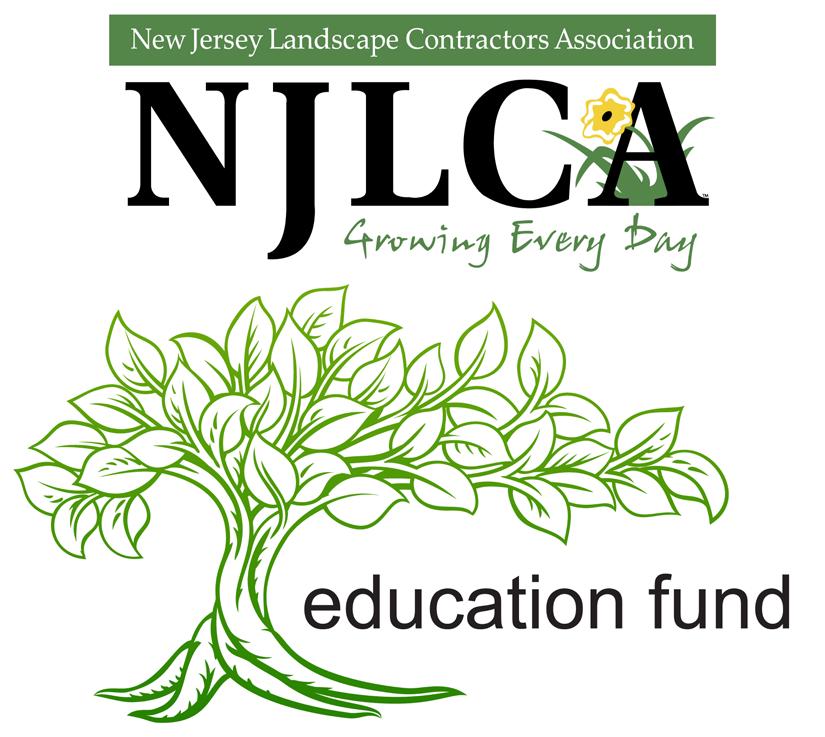
children, grandchildren or stepchildren who will be enrolled as a full-time student during the 2022-23 school year at a college or institution of higher learning; OR
2. Any student enrolled at Bergen Community College, County College of Morris or Rutgers University in a course of study related to the “Outdoor Living Industry” (i.e. Horticulture, Landscape Design/Build, Turf Management, Weed Science, etc.). Applicants will be evaluated based on academic achievement, potential to become a leading professional, employment history, extracurricular activities and the recommendation of a current academic advisor. Previous recipients may reapply as long as they meet all eligibility requirements.

IPM is defined as a common-sense ap proach to the control of: weeds, insects and disease problems. It considers which controls are the most effective, efficient and economical as well as biologically, ecologically and sociologically sound. Spe cific to the lawn and landscape Industry, it is very important during the early stages of practicing good IPM to set action thresh olds. This includes pest populations, dam age levels, environmental conditions, as well as any economic threats.
When monitoring for pests it is recom mended to consider the following:
• Identification: Beneficial vs. dam aging pests.
• Insect count to determine treat ment thresholds.
• Disease or weed % total coverage.
All decisions should be based upon collecting all of the pertinent information that is necessary to put a corrective ac tion plan into place.
Plant Health Care is Affected By:
• Extreme weather conditions.
• Site selection.
• Grade changes.
• Fertilizer, pesticide or cultural practices.
Consider all the factors that influence the plant’s overall growth and health. It is important to take your time looking un der the leaf surface and when possible, the root system for potential factors.
Examine all parts of the plant closely and carefully including: the roots, shoots, trunk and underside of the leaves. It is highly recommended to utilize a conven tional 10X Hand Lens to clearly identify any patterns of injury.
Physical evidence of a pest includes: The pest itself, shed skins, droppings or frass, webbing or honeydew, sooty mold, pitch, galls, etc.
Physical evidence of a disease in cludes: Mushrooms, fungal growths, galls, white-orange black powdery sub stances, leaf spots, water-soaked areas, cankers, discolored stem or root tissue.
Physical evidence to look for in turf: In jury, site conditions, soil compaction, con struction injury, lawn mower injury, insects, disease or weed populations. Look at the area surrounding the problem detected.
Consider such factors as:
• Exposure to elements.
• Proximity to roads or buildings.
• Lighting conditions.
• Drainage.
1. Biological Controls:
a. Introduction of natural enemies and beneficial insects: (Lady Bugs, Praying Mantis, etc).

b. Biological agents: (Milky Spore, Nematodes, etc).
c. Resistant varieties: (Grass seed and select plant material).
2. Physical Control: (Removing infected clippings, judicious pruning as required).
3. Pesticide Control: Pesticides should be used selectively with the least tox ic materials used.
Follow product label instructions ac cordingly to determine if your pesticide application will be used as a curative or a preventative.
In conclusion, when practicing the recommended methods utilizing IPM (Integrated Pest Management) you must always consider that judgements may be based upon aesthetics or economic loss.
Realistic thresholds should be put into place for any evidence of: weeds, insect or diseases detected. You should also prop erly identify the pest, weed or disease and become familiar with its life cycle. For en vironmental issues, the site and or cul tural conditions may need to be modified to correct the problem. This fundamental knowledge and general understanding will help you with your future Scouting and Monitoring practices by successfully implementing a sound Integrated Pest Management program.
Doug Cherry is a graduate of SUNY Cobleskill with a Bachelor of Technology in Plant Sciences. Doug has been serving his customers providing situ ational knowledge and insights for 27 years in the Green Industry. He is a Technical Sales Represen tative for SynaTek Solutions working in the Lawn and Landscape division. Doug has a true passion for Horticulture along with a focused dedication to helping customers solve problems Achieving posi tive outcomes as an end-result. This adds value to the growth and overall success of their business. These innovative insights allow them to see through a different lens with a clearer perspective and a bet ter understanding of their current world today.

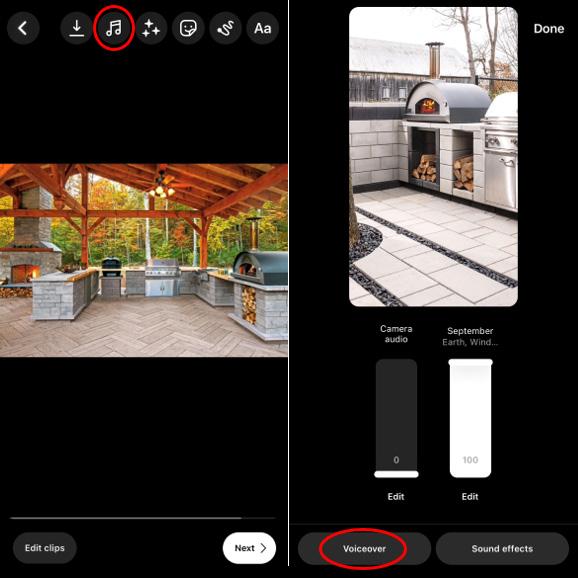

Social Media and Social Selling are here to stay; platforms like LinkedIn, TikTok, Facebook, Twitter, Truth and Instagram, etc. can make it challenging to choose the right one and proficiently navigate it. Knowing where your audience (demographic), peers, and interests are is a great start. Meta, the parent company of Facebook and Instagram, has long been a fan favorite. Instagram specifically has dominated the picture and video sharing space. Reels within Instagram have risen to the top of popularity. To maximize Instagram Reels benefits, you must first understand why, how to, frequency, when (timing), and content requirements.
Why is Instagram Reels the best avenue for lead generation, consumer outreach and peer interaction? Instagram is pushing Reels for its benefit in competition with TikTok. Piggybacking
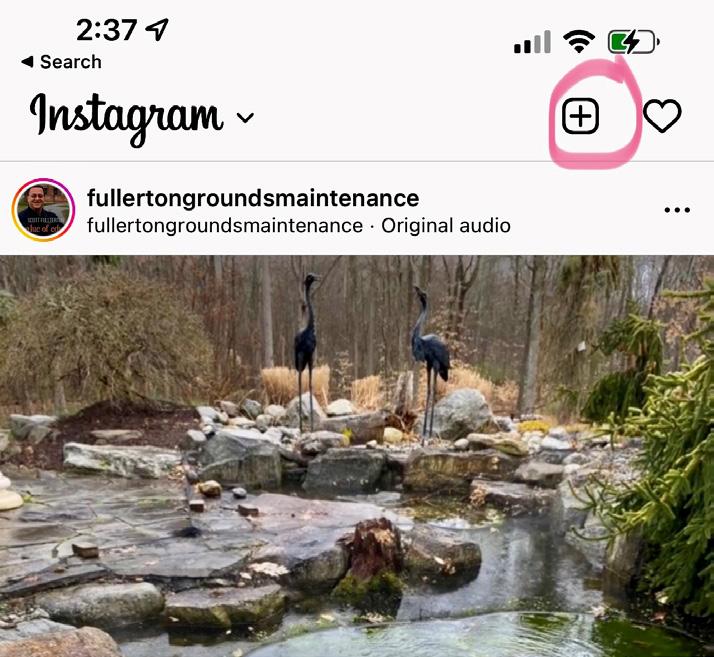
their objective or focus benefits our reach. The Reels tab provides up to a 90-second quick burst of info and entertainment. Good content with voiceovers and/or music syncing makes your message more memorable. Finally, Reels, unlike posts and stories, go to anyone, not just your followers. Reels being expanded gains you additional followers, likes and comments, leading to more potential clients.
How to create a Reel is easy and quick.
1. “+” symbol on top of the screen
2. Choose Reel at the bottom right of the screen
by Ryan Ravalli, Techo-Bloc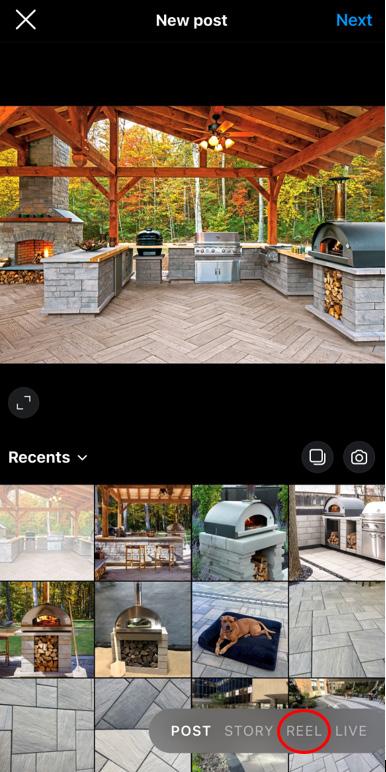
5.
6. Complete with writing your description adding hashtags (#), and tagging accounts that are relevant or targeted just like a traditional post or a live.
The frequency of “Reels” is very important. The current Instagram algorithm prioritizes Reels, so, until that changes, most of your content should be via this path/avenue. The ability to track success or “insights” is through the “posts” tab, and you can still also share your Reels on a “story.” So, follow your aggressive social media content schedule (remember you can’t over-post), and use “Reels” most often.
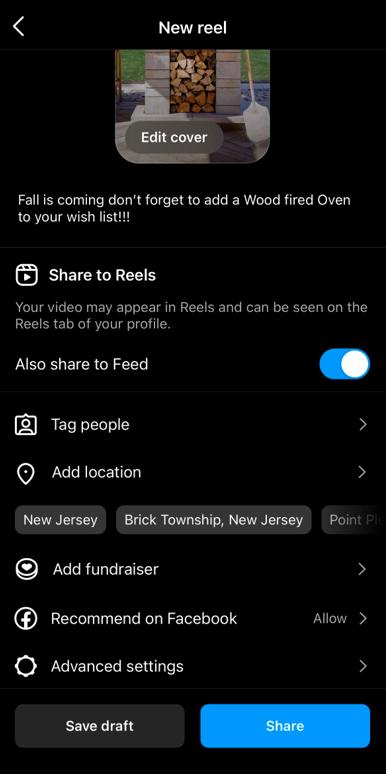
The “when” to upload or release the “Reels” is very similar to our daily work schedules. When we are preparing to leave in the morning (7–8 am), lunchtime (11 am-1 pm), and after work (5–6 pm), that is when most of the activity or active accounts are checking their feed. The weekends are another opportunity worth evaluating, specifically Saturday. Saturday represents a morning coffee/ breakfast (8–11 am) uninterrupted viewing opportunity. Sundays - No Posting benefit.
Content or information on Reels (or anywhere) should be valuable to your target audience. Exit surveys of past clients should determine what helps them make buying decisions once their priorities are established (for example, quality workmanship, creative design, trustworthiness, brand recognition, etc.). A schedule of “Reels” should be created and adhered to. If you are trying to show an organized job site, your foreman should supply high-resolution pictures of a neat and well-staged project day to day, week to week! If design is your specialty, then showing the process of 2D, 3D, rendered, and animated proposals would make an exciting and insightful Reel. Don’t skip the details of why, where, and for who, for each design element, for example, a wood-fired oven on a doublesided retaining wall base with attached wood storage boxes incorporated!
So now that we understand why, how frequency, timing, and content of Reels, what’s next? Social media and Reels specifically are constantly evolving and sometimes rapidly changing. So, take advantage of the “editing” features of “Reels” while it’s the Hot Ticket. Have fun exploring the different tabs like
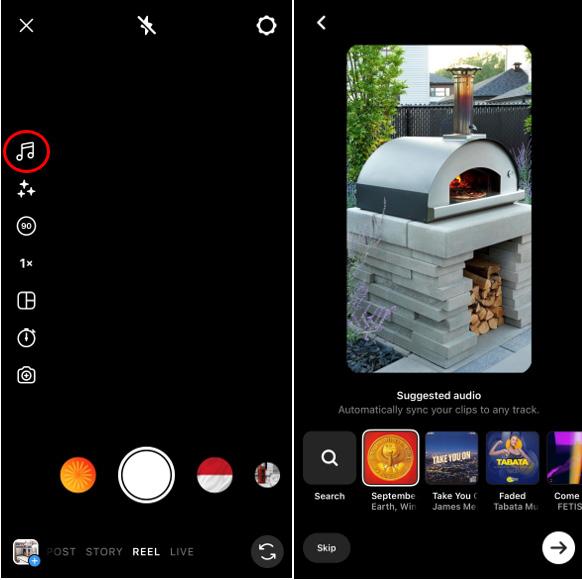
captions, stickers, and text overwriting to gain additional exposure to reach your objective. As you gain experience, you will enjoy the creativity of Instagram Reels, and you will use it more and reap the value.
Ryan Ravalli, Account Manager for TechoBloc is a Social Media Expert, ICPI, NCMA, and PICP Certified. Check him out on Instagram @ HardscapeSocial. Ryan attended Delaware Valley University and received a BS in Business Administration in 2007. After graduating, he worked for Oldcastle APG, where he strategically managed inventory levels, built relations and maintained POP marketing tactics. Since 2014, Ryan has worked for Techo-Bloc as an Account Manager, winning the President’s Club award three times. He mentors his co-workers, dealers and installer. Ryan is a hardscape product and system knowledge instructor.

I’ve always been mindful of the family behind the business. Grow ing up in a family-owned business, it was clear to me that our fam ily was unlike the rest of my friends’ families. In my family, the business was inseparably intertwined with the family. This was very different than the families that my buddies grew up in, where there were clear boundaries between work and family. We had unique opportuni ties and challenges that “regular” families didn’t have. We also had a sense of purpose that the business brought to our lives, along with the burden of ensuring the business was profitable and sustainable for the fu ture. Even as a young boy, I carried a sense of obligation to play whatever role was needed for the sake of our family business, not so much for the business itself, but for the family be hind the business – my family.
As a business coach, I’ve be come even more convinced that the family behind the business deserves as much attention as the business itself, especially dur ing critical times. A critical time may be when a leadership change, ownership change, or divestiture is being contemplated. For a fam ily business, the outcome of these monumental changes has serious consequences for the future of the business and the family itself. Sto ries of families that didn’t survive such critical changes abound.
The family behind the business should be overlooked no longer. Major business decisions should not be made without full consider ation of their impact on the family – or families – behind the business. And when long-term strategic plan ning is occurring, where the future of the business is being discussed,
“... the family behind the business deserves as much attention as the business itself, especially during critical times.”
careful thought should be given to how the future of the business is going to af fect the future of the family. This requires what is often referred to as a family office.
A family office is an organizational structure that is put in place to manage the affairs of the family. Family offices have been around for many years in very wealthy families but, in my opinion, un derutilized in general. With a family office in place, the family and the business are benefitting from thoughtful planning and careful execution of important matters affecting them. In other words, the fam ily behind the business is no longer over looked. This is a good thing.
Some family businesses have success fully navigated generations of leadership changes. But many have not. The success ful examples share some elements that are important to highlight here. The first ele ment is ongoing, long-term planning. This is really two elements because long-term planning is required for both the business and the family. The business leadership team is engaged in a consistent strategic planning process for the business. At the same time, the family leadership team is engaged in a consistent strategic planning process for the family. On top of that, these two planning processes are coordinated. Sounds challenging, doesn’t it? It is. But that’s why the successful examples are a fraction of the failures.

The second element is transparency. Where there are hidden agendas and se crecy, there will likely be destructive ac tions taken that will sabotage a success
ful transition. Bringing issues to light and being willing to have direct conversa tions about all aspects of an is sue is the only way this process works. I realize this is easier said than done. It of ten requires out side facilitation. And just like with the first element, transparency is required among the busi ness leadership team and among the family leadership team.
The third element is trust. As Patrick Lencioni famously explained in his book, The Five Dysfunctions of a Team, there are two kinds of trust. The first is predic tive trust, which is based on previous ac tions. Predictive trust is earned by being trustworthy. Once it is broken, it is gone and may never be recovered.
The second type of trust is vulnerabili ty-based trust, which is based on faith. It is not earned. It is given out of an abundance of hope and love. It requires a person to let go and allow someone else to take the wheel even if that’s a scary thing to do.
Successful family business transitions only occur when vulnerability-based trust is present. Predictive trust only works when people are perfect all the time, which, of course, is never the case. Pre
dictive trust will always lead to failure.

These three elements – long-term planning, transparency, and trust – are foundational principles found in success ful family businesses. They take effort and time to develop so the sooner a fam ily business gets moving in this direction, the better.
My family business was missing one element – long-term planning. The busi ness that my grandfather started in 1940 no longer exists. For 80 years, this busi ness provided for my family. But it never made it to the third generation because there was no plan in place. Sad, but true. And powerfully motivating.
Now go forth.
Phil Harwood, Managing Partner of GrowTheBench, Snowfighters Institute, and ProMotion Consulting, is one of the leading man agement consultants in the professional land scape & snow management industries in North America. Contact: Phil@GrowTheBench.com.
Note: This article was originally published in Landscape Management magazine and is republished with permission.

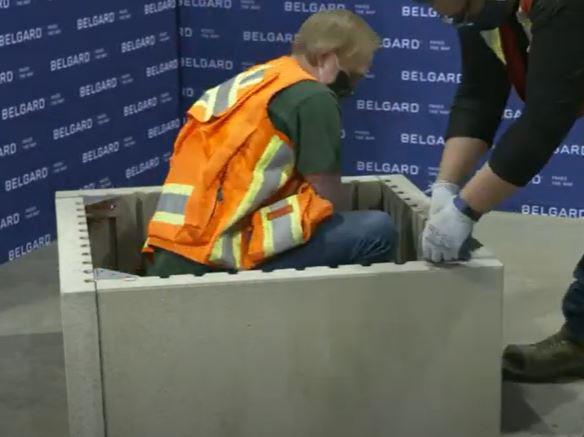 by Daniel Moreland, GBCI GREEN GA, CSI CDT & CCPR, NCMA CMT
by Daniel Moreland, GBCI GREEN GA, CSI CDT & CCPR, NCMA CMT
I think just about anyone that is involved in hardscaping in 2022 is wellaware of the concept of the outdoor room and how it has changed the vision of the consumer and driven sales and product selection over the past 10-15 years. For most clients the perception of
the paver and wall patio has evolved into the dream backyard.

The hardscape industry’s response to this demand has been stellar with prepackaged kits and pre-built modular fireplaces, firepits, and kitchens. It’s 2022,
and any hardscape installer that isn’t promoting outdoor living to homeowners by now may be missing the boat in the residential market. An interesting trend however has been seen in this segment over the past couple years: Large-format modular concrete panels (LFMCP).
All three systems offer their own benefits: kits offer customization, while pre-built modular units allow the customer to see and purchase exactly what the finished product will resemble while being quickly installed. LFMCP offer a combination of both that can be used for:
• Benches and planters
• Fire pits
• Outdoor kitchens
• Privacy walls
• Raised gardens
• Fireplaces
The base unit is a 18”x36”x3” with 6”x16” units, both available with channels to accept hardware. Both sizes offer an open and closed channel option for aesthetics. The panels can be installed horizontally and vertically. Stainless steel
hardware is sold separately. I have seen the 18x36 handled by one person, but for safety reasons it should be a 2-person lift. When considering labor think about the time it takes for 2 workers to lift and place one of these panels and install the hardware versus lifting, placing and often guessing with retaining wall blocks. Furthermore a two person lifting tool has been developed to handle the 18x36 unit for additional safety.
In addition to SRW block our company has also done well with the pre-built units, even though they require the preparation of a concrete levelling pad and investment and jobsite accessibility for the proper equipment to safely handle them.
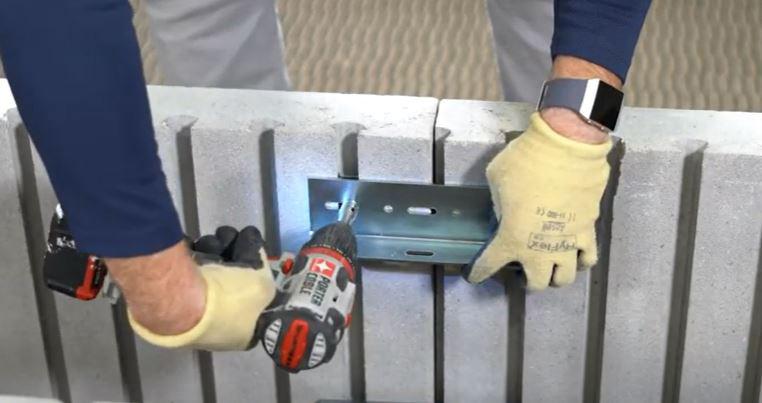
Panels offer a mix of both: design flexibility (trimmable with a diamond blade concrete saw, with proper planning waste and cutting should be at a minimum) and time savings. A recent design book published features over 30 plans with instructions that allow the customer to visualize and pick exactly what they want, the same as with the pre-builts. Other materials, including wood, can also be integrated into the installation.
Another advantage is the aesthetics. These panels offer a modern, clean jointless look that is very popular with many landscape designers. They can work well with existing hardscaping as an add-on, and because of speed of installation, the construction eliminates
delays for the client. Most landscape companies are likely to use these on the ground; however, they work well with pedestal set pavements too.
When choosing what kind of outdoor room materials to work with to create the best design solution for the client, consider large-format modular concrete panels as an option.
I am available at 908-489-3441 or dan. moreland@oldcastle.com to assist in choosing a system that will work best for your company and the client’s project.

Daniel Moreland, LEED GA, CDT, CCPR is a member of the Interlocking Concrete Pavement Institute-National Concrete Masonry Association (ICPI-NCMA) Technical Sub-Committee and Certification Sub-Committee as well as the Chairman for the ICPI-NCMA Commercial Technical Promotion Advisory Committee. As an
ICPI instructor, he has taught certified paving contractor courses in six states including at Hardscapes North America (HNA), the industry’s premier trade show, and has also taught the NCMA Level I SRW Installer course multiple times. Recently he was selected as a judge for the 2022 Northeastern Hardscape Expo Paver Installer Competition in Hartford, CT. Dan has also hosted hundreds of AIA hardscapes CE courses across the Northeast U.S. over the past 15 years. He currently is a Belgard Architectural Representative for Oldcastle APG, Inc. a company he has worked at for 20 years as of 10/1/2022. He resides in Allentown, PA.
Over the summer, (left to right) Rich Goldstein (President), Jim Stewart (past President), George Futterknecht (past President and current Director), Roger Dammer (Founder of BCLCA), Mark Borst (past President) and I (Gail Woolcott) got together at Roger’s house near LBI to visit with him and his wife. It was a wonderful time and I was able to read through minutes from 1970’s Board Meetings. What a hoot to see all the old names and some of the same issues affecting them over 50 years ago. Thank you to Roger and his wife for having us. Roger was chock-full of great stories of the past is an amazing artist!

A landscaper from New Jersey called me the other day to talk about various issues related to organizational communication. We all know that it ultimately comes down to communication. Yet despite that common understanding, miscommunication still occurs, problems result, and productivity is wasted.
At least we agree that communication is important.
If only we could do it better, right?
While an ardent advocate of overcommunication, like many of us I am not a fan of obligatory meetings in that they are frequently aimless, mismanaged, and politically-correct. Yet, given the importance of communication, we must have them. All that taken as a composite, I have long held the need to have more vertical communication with Foremen in that they are at ground zero: On the job site overseeing crews, performing real work that gets all of us paid. And yet, most owners do not communicate with them.
At least we agree that communication is important. Though obviously only for some employees, right?
My conversation with the New Jersey landscaper addressed Pulse Meetings that are typically held monthly with only the owner and the Foremen present; no managers, no supervisors, no filters. This direct communication forces the
often-detached owner to reconnect with the field directly, demonstrate timely appreciation to the Foremen for their contributions, and sustain an ongoing conversation to improve the company culture, productivity, and heaven help us, communication.

When requested, I offered the landscaper a general meeting agenda the owner could modify, use, and replicate based on his/her preference, company norms, and desired communication goals. Aligned with the Balanced Scorecard business model, here is the basic agenda I offered to the landscaper.

a. Ideas or comments to increase enhancements sales
b. Ideas or comments to increase irrigation sales
c. Ideas or comments related to additional services the company should offer to increase revenue
a. Discuss any employee
communication issues (e.g., policies, processes, rumors)
b. Discuss staffing issues, ideas, shortages
c. Discuss any shop, equipment, employee, vehicle, tool-related safety issues
d. Discuss any workers’ compensation issues
e. Discuss any field training needs
f. Discuss any employee disciplinary issues
a. Ways to improve gross margin, labor efficiency, accountability
b. Ways to improve yard departure/ arrival in less than 15 minutes
c. Ways to improve production rates
d. Ways to decrease field overtime
e. Any vendor or materials (e.g., quality, delivery, returns) issues
a. Any jobs at risk
b. Any customer comments made on the job site or during a walkthrough
c. Ways to improve job retention
d. Ways to improve job quality
e.
While it is readily acknowledged the first several Pulse Meetings may be a little awkward for the owner as well as the Foremen, it is incumbent upon the owner to establish a context of ease, openness, and trust with the attendees. This must be done by focusing on specific ideas to address various company business concerns (e.g., revenue, employees, process, customer), and not simply let the meeting spiral into a bitch session, characterized by venting problems
without proposing realistic solutions. That is not the purpose of this meeting.
With that thought in mind, the owner must convey the intent that these meetings are about building the team, encouraging dialogue, and improving the work environment by showing sincere interest in the opinions of those employees (i.e., Foremen) the owner has entrusted to oversee work crews, customer job sites, and resource management. Given that level of daily responsibility, why shouldn’t an owner instinctively trust Foremen to express their ongoing verbal input about key business goals, operational procedures, and interpersonal dynamics?
So, invest some of your valuable time, and take an active step by communicating directly with your Foremen. You’ll get out of it, even more than you put into it. After all: It is YOUR company. Be the leader, owner, and role model you are supposed to be, and do the right thing for the company.
Who knows? Maybe after six or seven Pulse Meetings, communication will be improved, employee retention will
increase, and the company culture will be more transparent, cohesive, and sincere.
Try it and let me know what you think. I’ll bet you will be surprised.
If you have any questions or comments about this topic or anything else related to human resources, simply call me at (760) 685-3800.
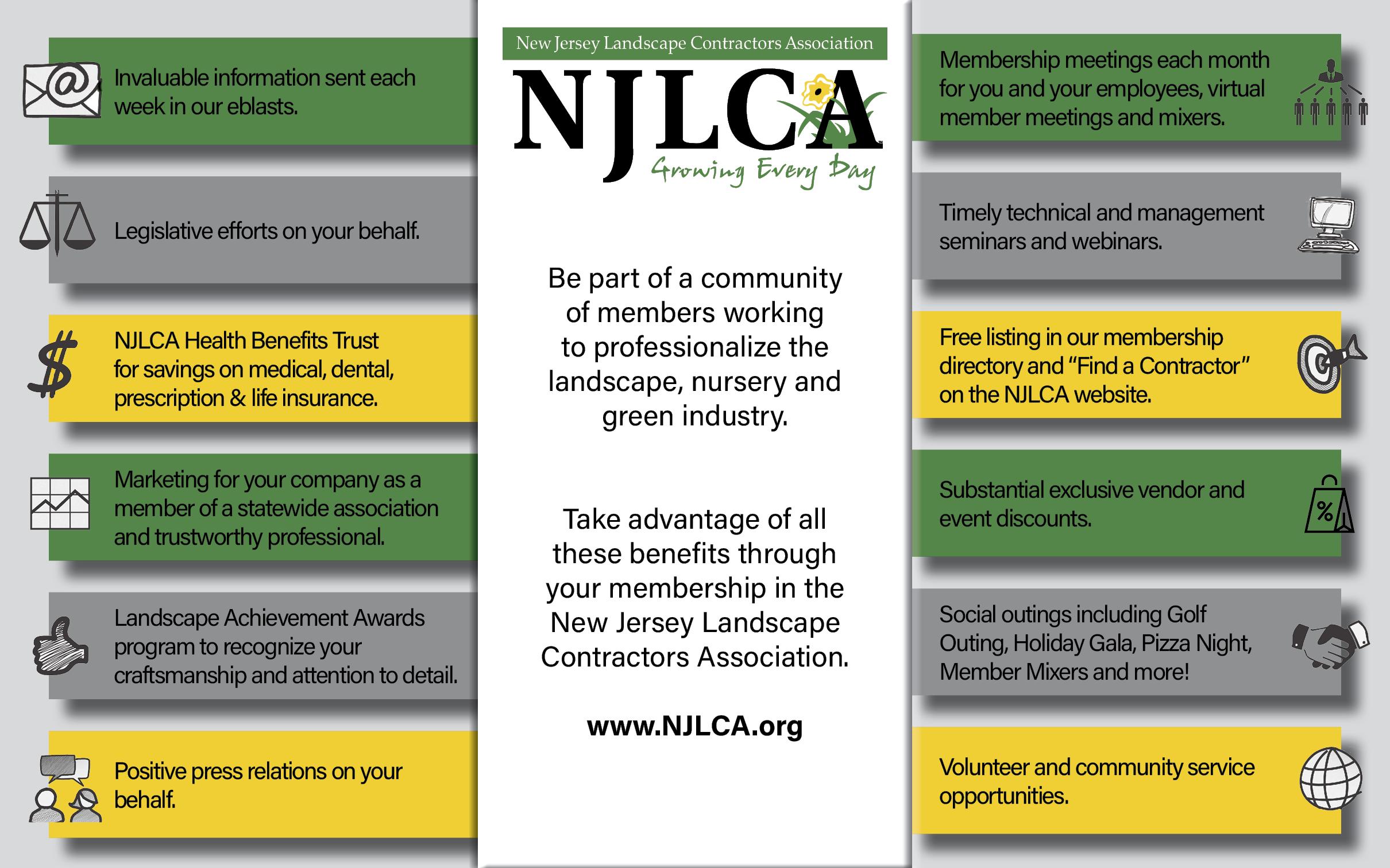
Steve Cesare has more than 30 years of human resources experience. Currently, Steve is a Principal Consultant with the Harvest Group, a nation-wide firm.

Steve earned his Ph.D. in Industrial/ Organizational Psychology from Old Dominion University. He has authored 68 professional journal articles and made over 60 presentations at professional conferences. Additionally, he has 17 years of collegiate teaching experience at Old Dominion University and the University of San Diego.
Steve’s areas of direct value include helping clients with their: human resources programs, legal compliance, performance management processes, compensation systems, training and development, safety and workers’ compensation, and wage and hour issues.

Early Riser
A dwarf version of best-selling Quick Fire® hydrangea with the same early bloom time, on a habit that is about one-third the size. Flowers age to deep burgundy red before other varieties even start to bloom, making it a great season extender.
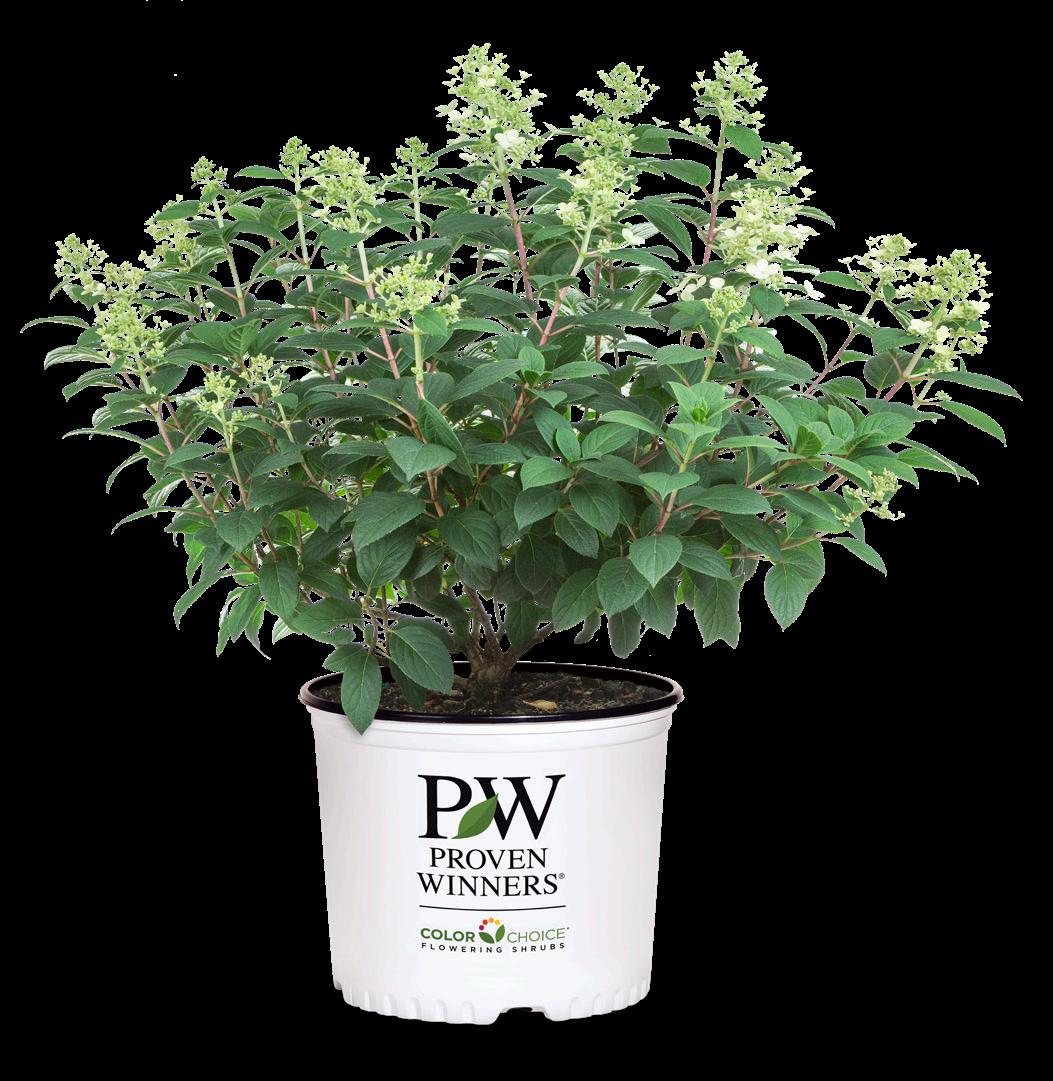

Compact • Early blooming • Brilliant color

A warm welcome to our new and returning members
A-Tech Landscape Design, Inc.
Jon Dean South Plainfield, NJ
Beechwood Landscape Architecture & Construction, LLC Steve Chepurny Southampton, NJ
Bergen County Tech. SchoolLandscaping
Andee Dixon Paramus, NJ
Camillo Pirone Landscaping Tony Duncan Princeton, NJ
Conover Beyer Associates Bonnie Preston Manasquan, NJ
The Cutting Edge Landscaping
Michael Karl, CLT Sparta, NJ
Homestead Structures, LLC
Ashley Dennis New Holland, PA
JC Hardscaping, LLC Julio Calderon Piscataway, NJ
Jonathan Green & Sons, Inc. Todd Pretz Farmingdale, NJ
Linnett Landscape & Design Roger Linnett Roseland, NJ
MONROVIA
Christopher Rubino Winter Park, FL
Natures Apprentice, LLC Zac Tuttle Somerville, NJ
Outdoor Power Equipment Institute Chuck Bowen Alexandria, VA Paco Landscaping Patricio Guevara N. Plainfield, NJ
Progressive Hydraulics, Inc. Chuck Lovett Saddle Brook, NJ
Provident Protection Plus Gunnar Neilsen Augusta, NJ
Safety Turf, Inc. Carl Sanderson Royersford, PA
SRV Landscaping Construction & Design, LLC Melvin Omar Vasquez Clifton, NJ
Sunshine Landscaping & Tree Services, LLC Marcio Soares Manville, NJ
Total Maintenance Pro Marvin Barrantes Manville, NJ
WeatherWorks, LLC Kevin Hopler Hackettstown, NJ
NJLCA’s recent Latino Mixer was a great success. Board Director Hector Escobar talked to attendees about the importance of being professional and legisimate companies. The event was sponsored by SiteOne Landscape Sup ply and had over 65 attendees!
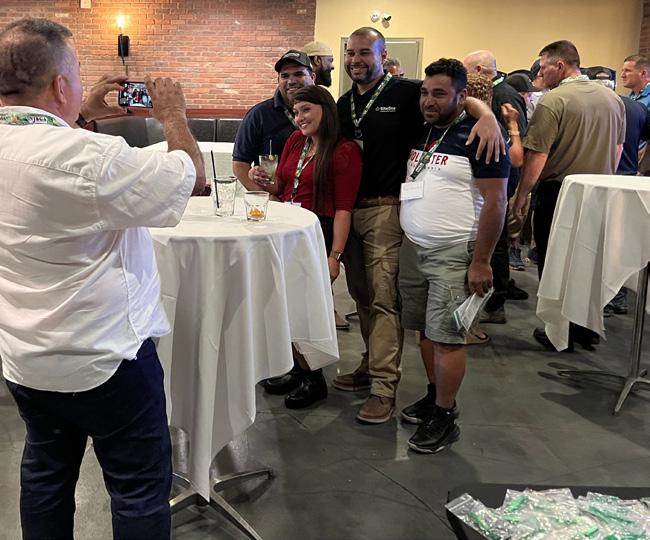




Todd Abrams, Owner/Operator of Big Heart Landscaping, grew up in Livingston, graduated from Quinnipiac University and moved to Short Hills where he and his wife raised their two boys.
Being a successful business entrepreneur for most of his life, Todd’s skill was buying, build ing up and selling small businesses. During his free time on the weekends, he always enjoyed working on outside projects around the house. Over the years, Todd installed a retaining wall, fence, bed renovation, paver patio and walkway, as well as made several other property en hancements to his home.
He finally decided to take his passion of landscaping and hardscaping and started Big Heart Landscaping. Besides the experience from all the jobs he has completed for customers, Todd holds over a dozen certificates in the Landscaping/Hardscaping field.
For more info, visit www.bigheartlandscaping.com.
Steve Redan founded Kenvil Power Mower in 1957 as a retailing, servicing outdoor power equipment deal ership after the untimely passing of his dad. With the need to support his mom and siblings, Steve’s mom signed him out of high school, and with a modest loan of $150 from a neighborhood friend (and Steve never forgot this gesture), Steve purchased his first three HomKo lawnmowers for resale.
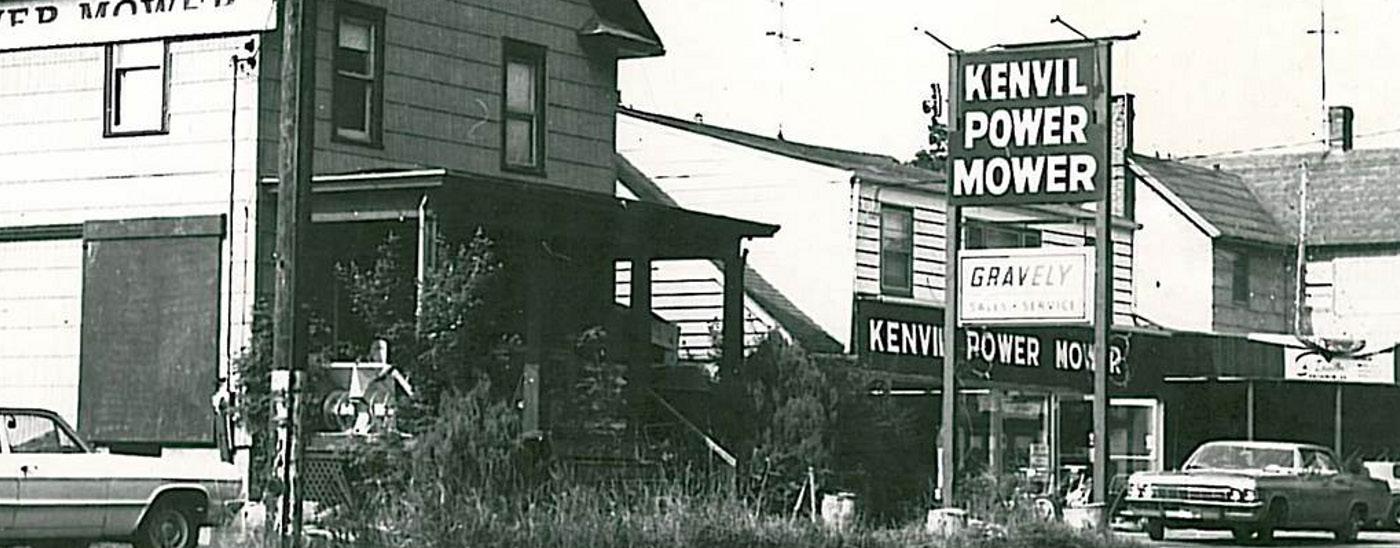
Kenvil Power Mower grew through the 1950’s and 60’s with a host of mower and handheld brands, mostly catering to the homeowner market. Kenvil Power Mower became the most successful dealer with the Snap per line of lawnmowers, and in the late 60’s, Snapper asked Kenvil to become a distributor for Snapper cov ering three counties in NJ, and resulting in the formation KPM Distributors, selling Snapper equipment to other dealers, similar to Kenvil Power Mower. KPMNY Distributors was also formed to serve the Long Island distribution area in the early 80’s.
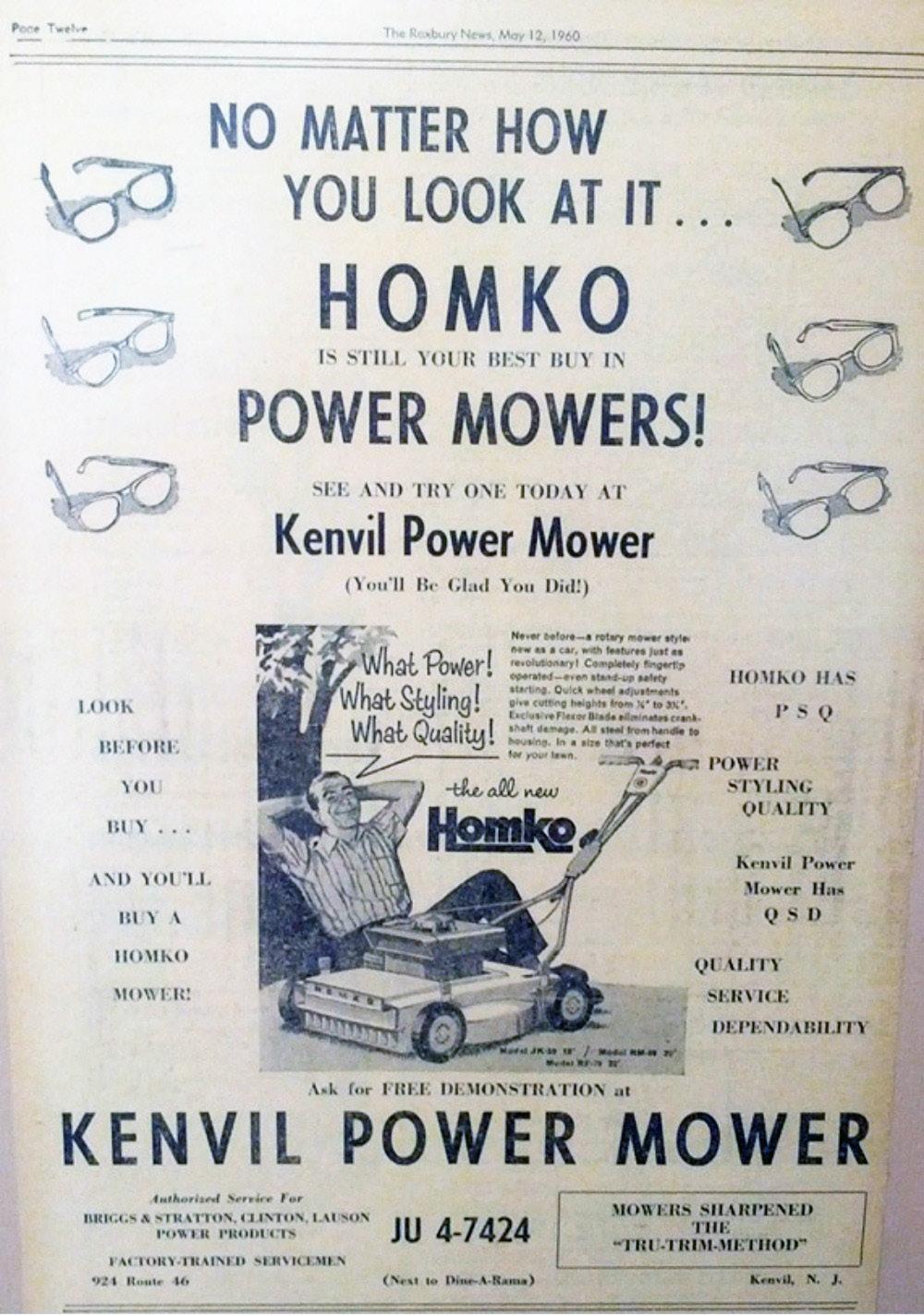
Kenvil Power Mower continued to expand its product offering as a dealer through the 70’s and 80’s within the Snapper brand, such as snow blowers, rear-bagging mowers, and with other lines like Locke-branded Triplex, Lawnboy, Jacobsen, Tanaka and Simplicity.
In the 80’s, the commercial landscaping industry began its rapid growth, and in 1985, industry-innovator, Dane Scag introduced the Scag mower, a heavily commercial focused brand of mowers, when Exceptional Equipment and Service was formed to become a distributor for Scag Power Equipment. In 1996, Kenvil Power Mower was sold to another dealer owner seeking to operate a second location, and through the 90’s and 00’s, KPM, KPMNY and EE&S saw many challenges and opportunities, with factories’ changing in direc tion, both toward, and away from, distribution.
Today, KPM Exceptional, LLC, represents over 15 brands of outdoor power equipment, including lawn-mowing, debris management, heating, and snow and ice management equipment, accessories, and repair parts, serv ing retailing-servicing dealers from Virginia to Maine. Steve Redan puts it best when he says: “We treat our customers the way we would like to be treated. We strive to do what works for our customers’ business by do ing the right thing.” For nearly 60 years as a retailer-then-distributor, this is KPM’s priority every single day. For more info, visit www.kpmedi.net.

“We treat our customers the way we would like to be treated... ”1960 advertisement for Kenvil Power Mower
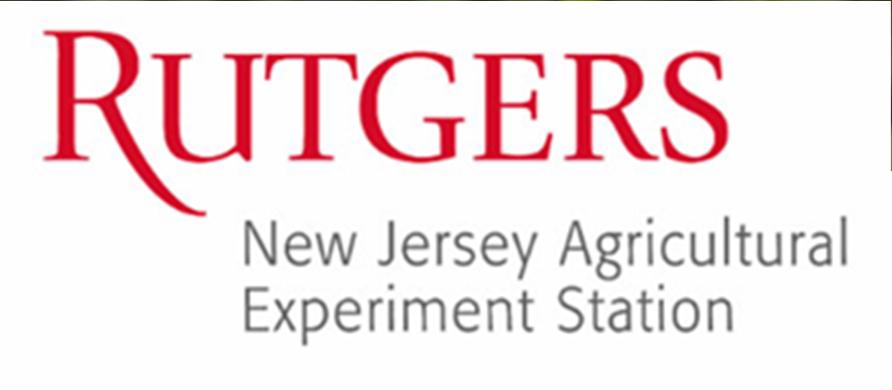

In this issue, I decided to take a dis cussion that was on Facebook recently to show what folks think of our industry and the great responses to those folks from members of NJLCA.
We need to impress upon the public that the landscape industry is not out to hurt our planet, but preserve it and be stewards of the environment.

My personal opinion only (Gail) is that we are moving towards a more ecofriendly equipment source. However, we are not there yet. The batteries required for battery powered equipment can cause just as much ecological damage when we have to mine for cobalt and various met als needed. Furthermore, there are still quite a few fires and accidents with these batteries, that I feel the kinks need to be worked out before we fill our fleets with them. Finally, we need a recycling solu tion, as there is currently no way to recy cle the lithium batteries en masse. But I digress. Please see this meme to the right and the well thought out responses to this person’s post below.
Well, this is helpful. Please note sarcasm.
Is it really a “scam” when the consumer demands that lawn care companies meet a set social expectation of the consumer?


The landscape industry did not set this social expectation, by the way. However, it was set (some 60-plus years ago) by chemi cal company commercialism and the prom ise of a weed and insect-free landscape.
The expectation of the customer was then met by the lawn care industry filling the demands of the consumer.
Additionally, your post would do well to include big box and the mom and pop garden centers that sell any and all types of synthetic chemicals and fertilizers to unlicensed, unskilled and untrained
homeowners who play week end chemical warriors and as sume if the label (if they even read the label) hypothetically reads 8oz per gallon, use 16oz per gallon. With the thought process being if I use twice as much as label states it works twice as well. FYI: it doesn’t work that way
Your post is just another awful attempt to generalize, demonize and blame the land scape industry. There’s plenty of blame to go around. This is not to say that the landscape industry shouldn’t take respon sibility and be more aggressive in their approach to educate the industry on new alternatives. They most definitely should.
Oh and let’s not forget the farming industry, there is room for them in here also while we’re point ing fingers.
It’s very easy to point blame while not tak ing any accountability for one’s own actions.
It takes work to create a meaningful dialogue that will ultimately make a dif ference and change a paradigm.
I can only imagine how much further along we would be if any of you that con stantly complain put half the effort into promoting the education of landscapers (and homeowners) on low-impact, organ ic and ecological practice.
How about Instead of the typical gen eralizations, demonization and blaming of one side that I see in many FB groups, try reaching out to those of us that are working to improve our industry, and educating the consumer to build positive, productive relationships that could in the end drive the change we’re looking for.
Funny how the people that bash the professional landscape industry are the very same people who hire “Chuck with a Truck” to service their property because he’s the cheapest guy around.
Just about every state has a profes sional landscape association, if you need a landscaper who’s knowledgable in best practices in the industry, takes pride in the services they provide, and stay on top of their education so they are aware of the ever changing policies, practices, laws pertaining to the industry. Contact your local landscape association and ask for recommendations. And I applaud those people who are becoming aware of how important our environment is. By everyone involved working together and finding mutual ground, we can continue helping Mother Nature.
The NJLCA tries to give back to our communities by completing a service project each year. This year, the project chosen was for the Wyckoff Fire Department Engine #2 headquarters. The purpose of the project was to create a seating area for the volunteers of the department. A place to reflect, as well as relax between calls.
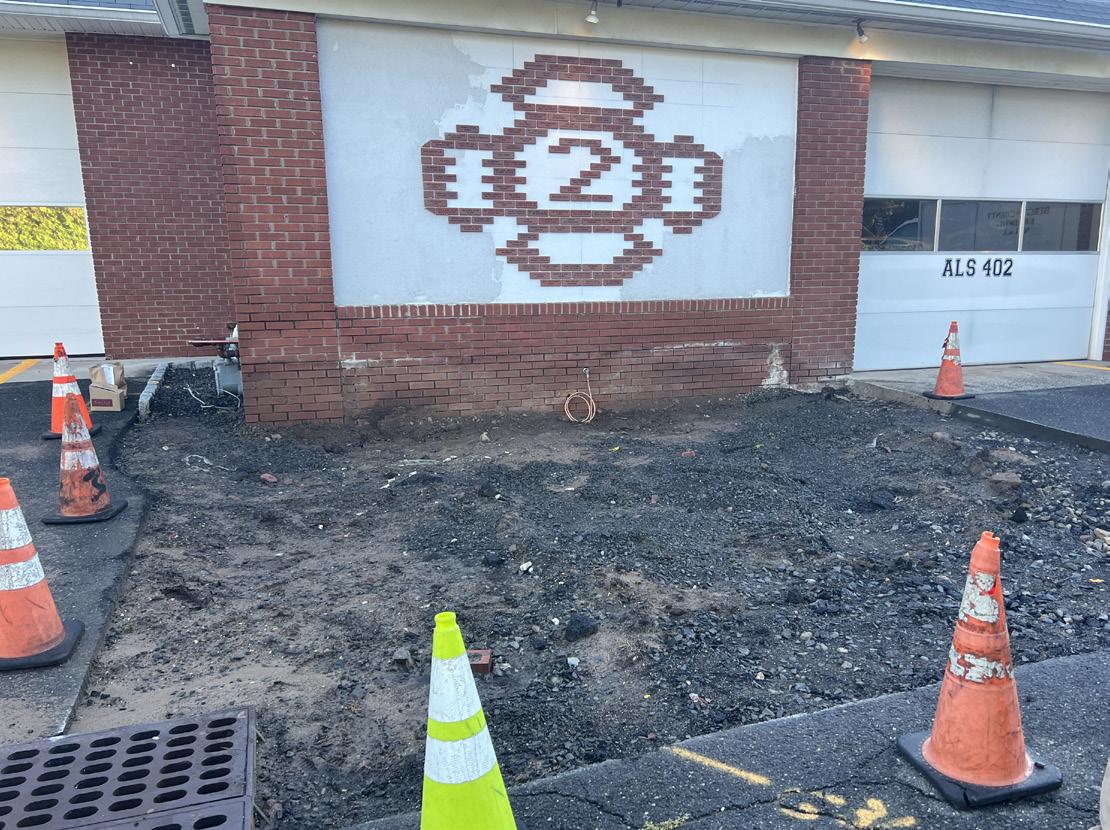



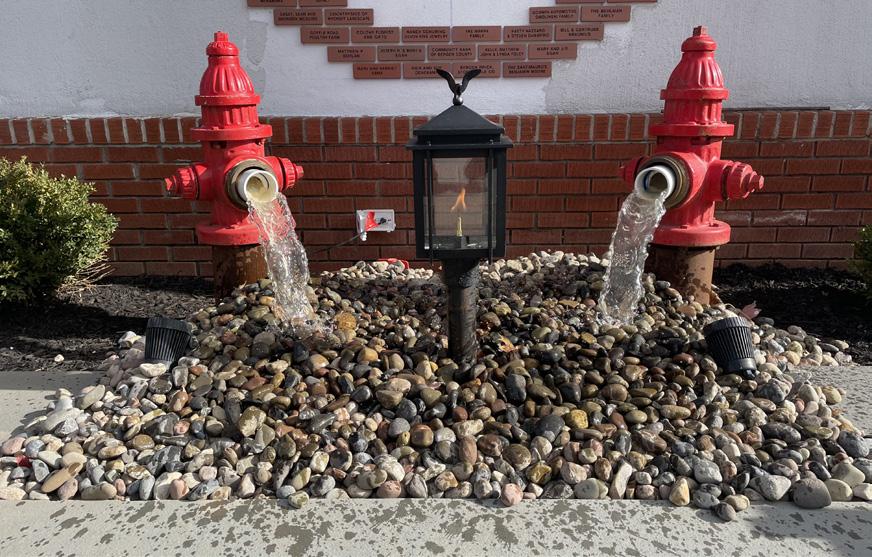

The project was designed by Board Member Rich Andreu (Exclusive Stoneworks) and headed up by Board Member Shawn Kukol (Horizon Landscape Co.).
Work included the installation of a retaining wall/seat wall with bluestone treads leading to a concrete paver landing. Two benches were installed, along with a water feature and eternal flame as the focal point. The brilliant waterfeature consists of two fire hydrants acting as a pondless waterfall. Finally, the landscape includes two planting beds for seasonal color and a newly installed flagpole (provided by the department).
We would like to extend great thanks to the following, without whom this project could not have been completed:
Volunteers:
Barillo Landscaping
Exclusive Stoneworks
Green Meadows Landscaping
Horizon Landscape Company
Vander Sluys Landscape Development
AGS Materials - TOPSOILSTONE.com
Aquarius Supply
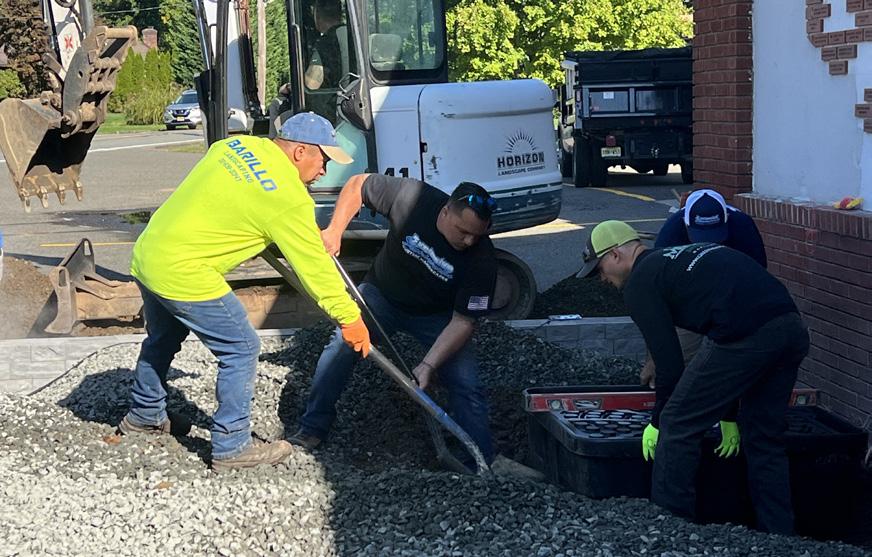
Bergen Brick Stone and Tile
Braen Supply
Exclusive Stoneworks
Horizon Landscape Company

SiteOne Landscape Supply
Stone House Nursery

